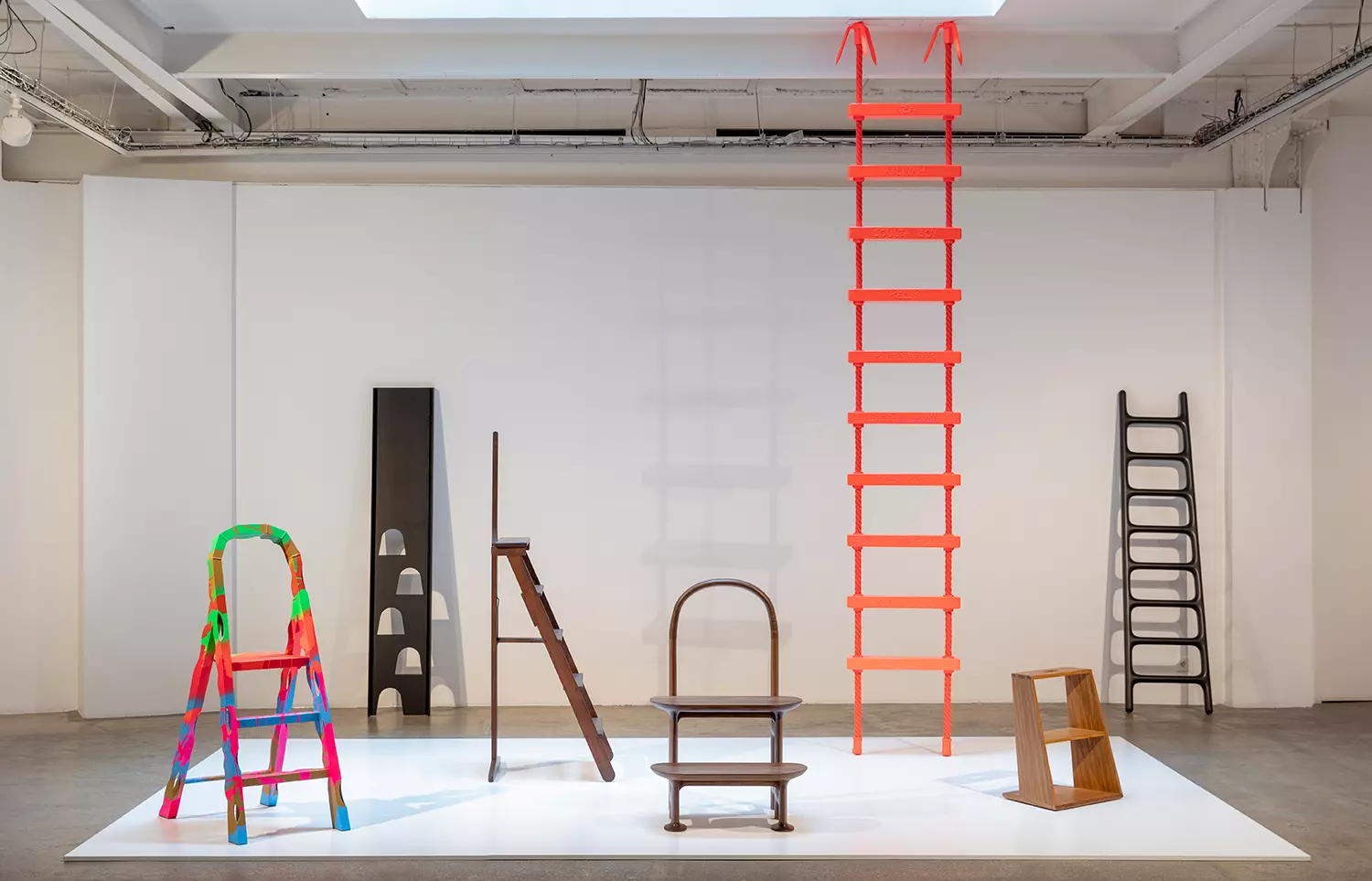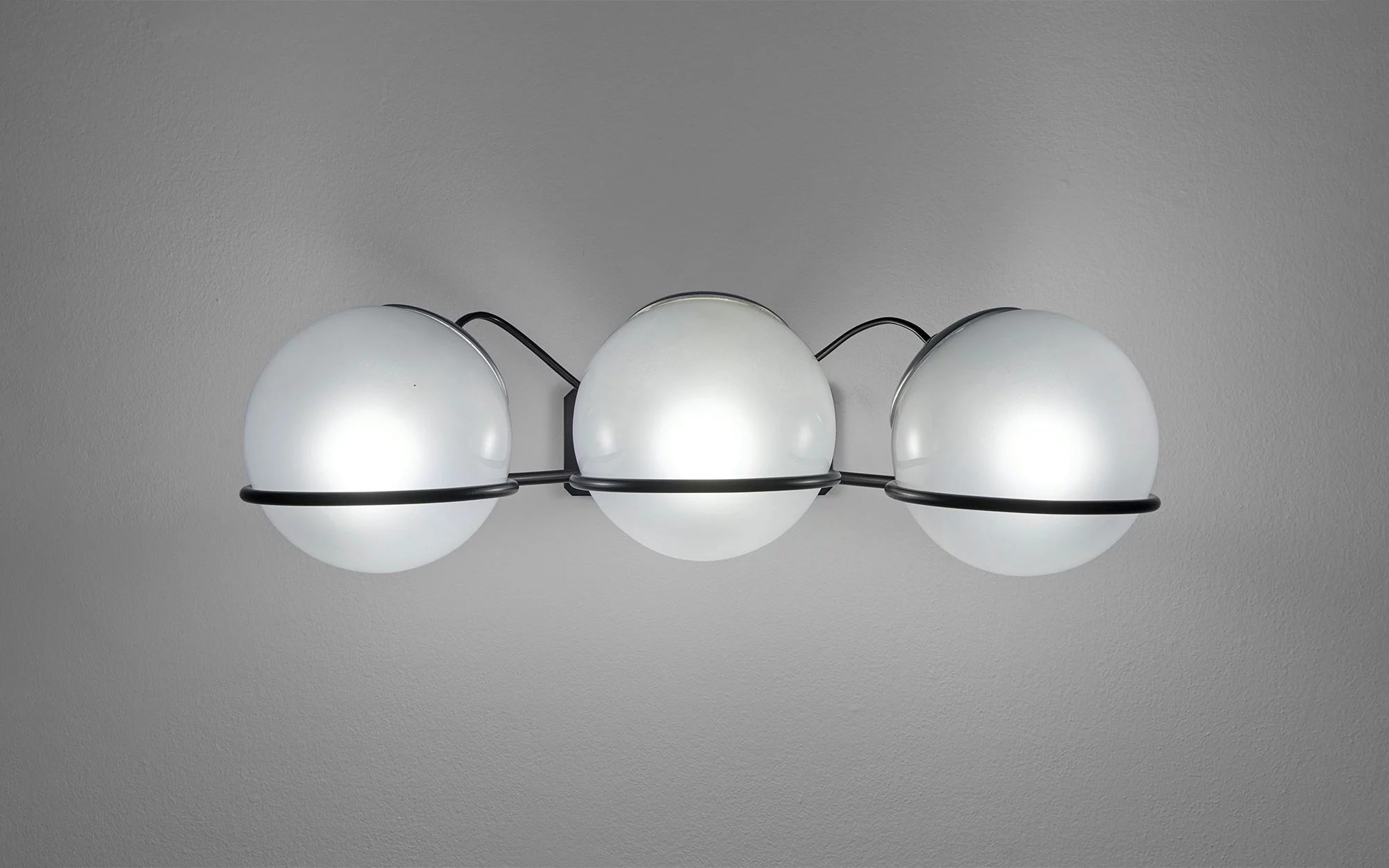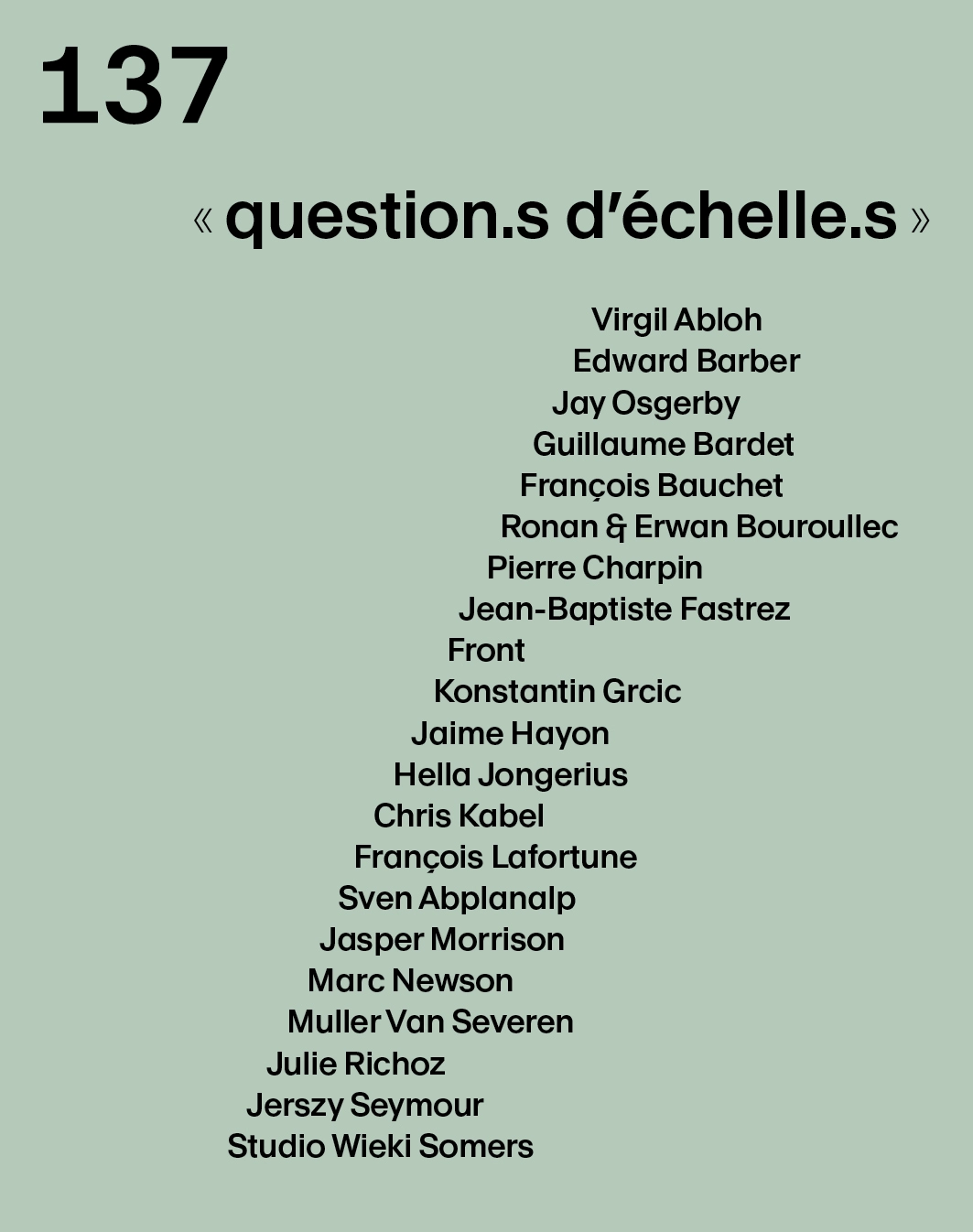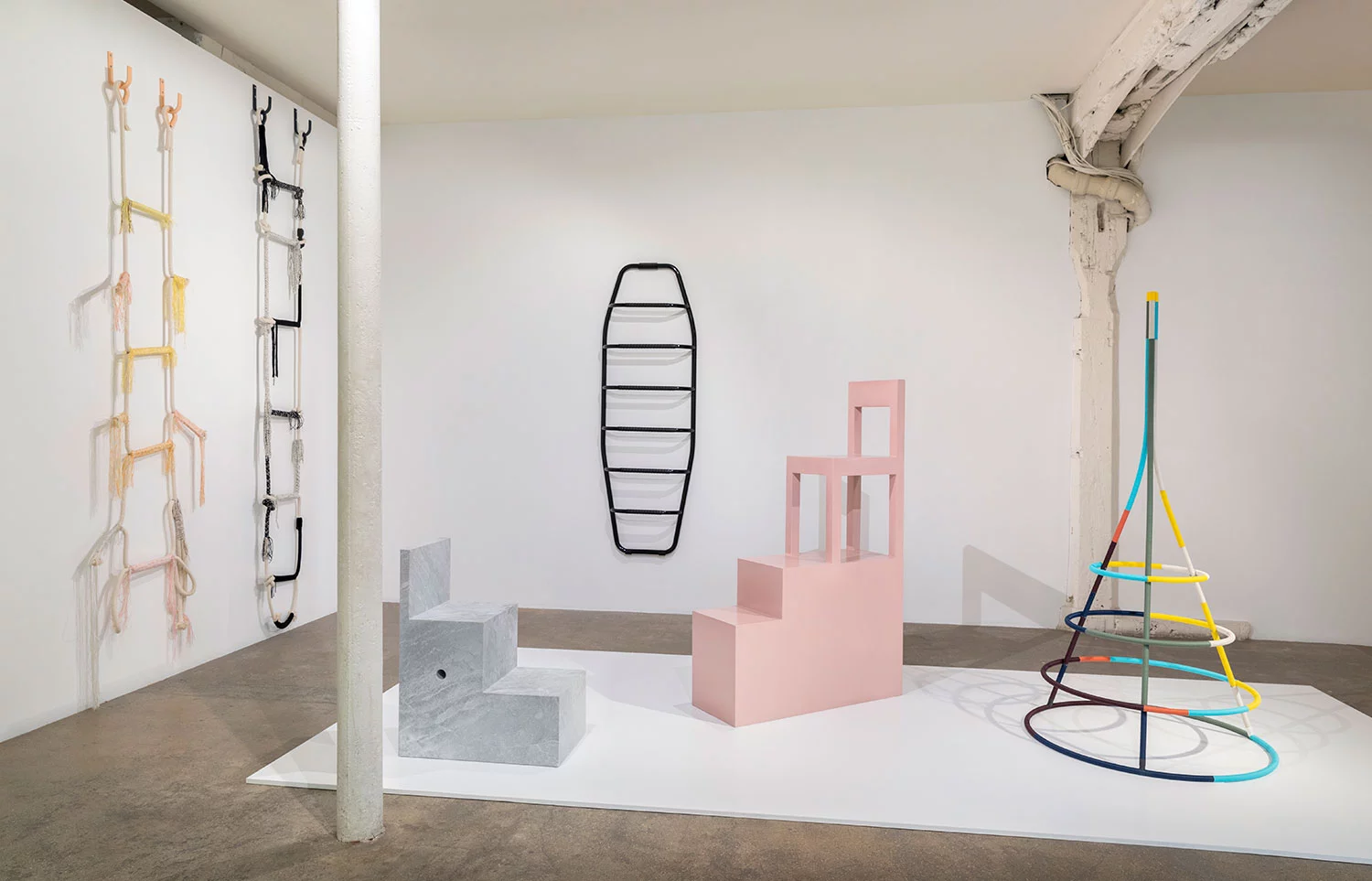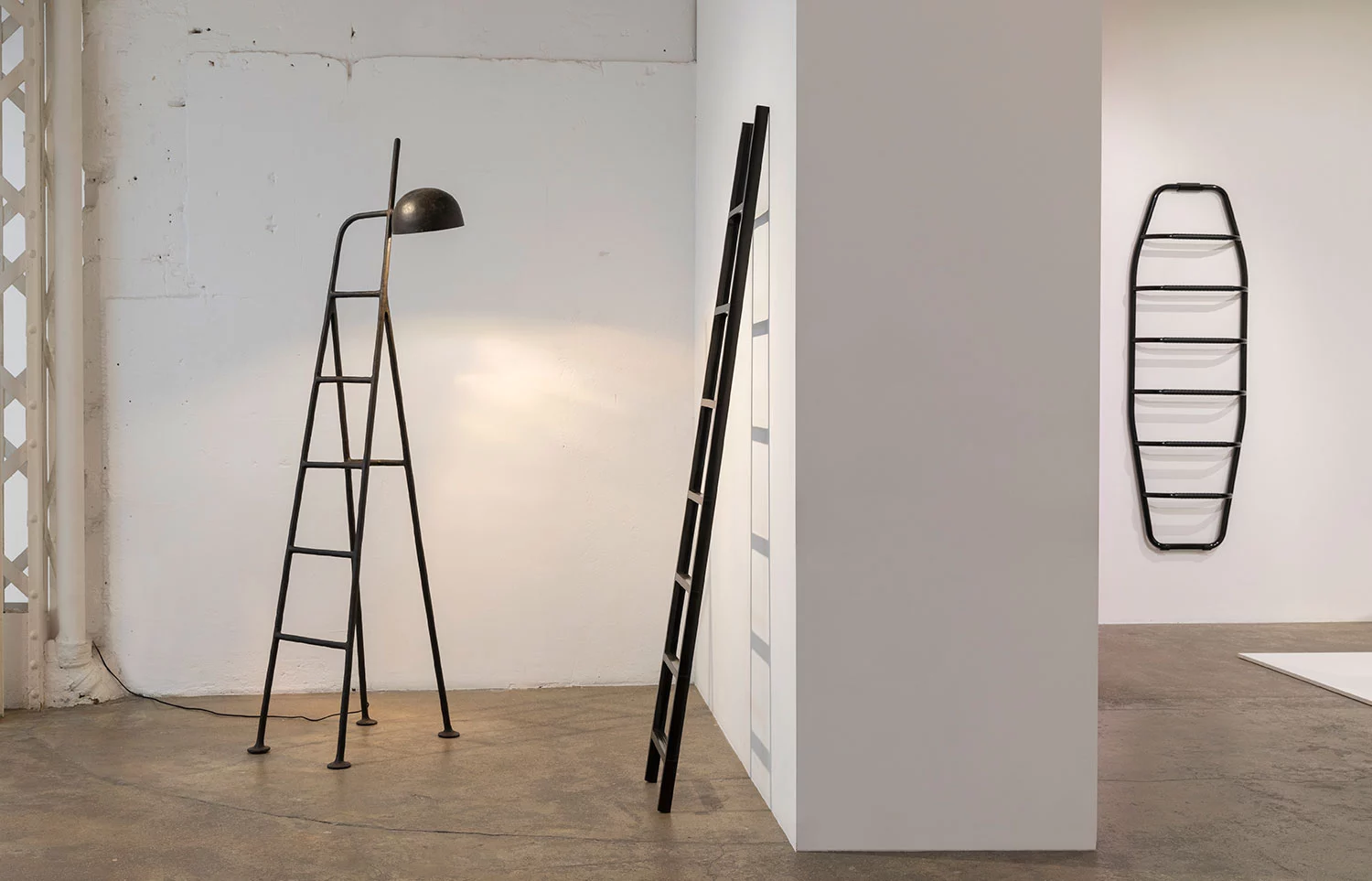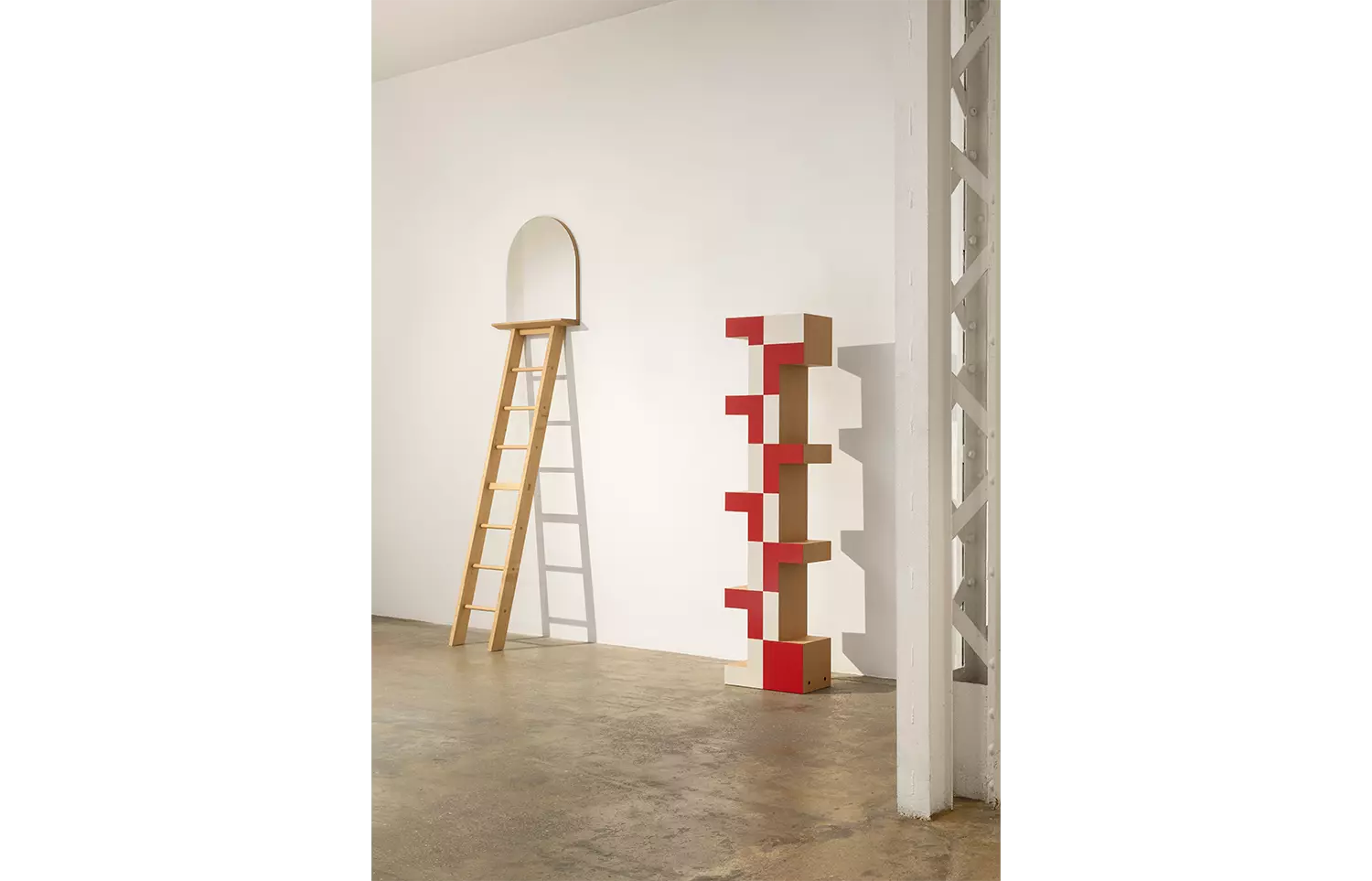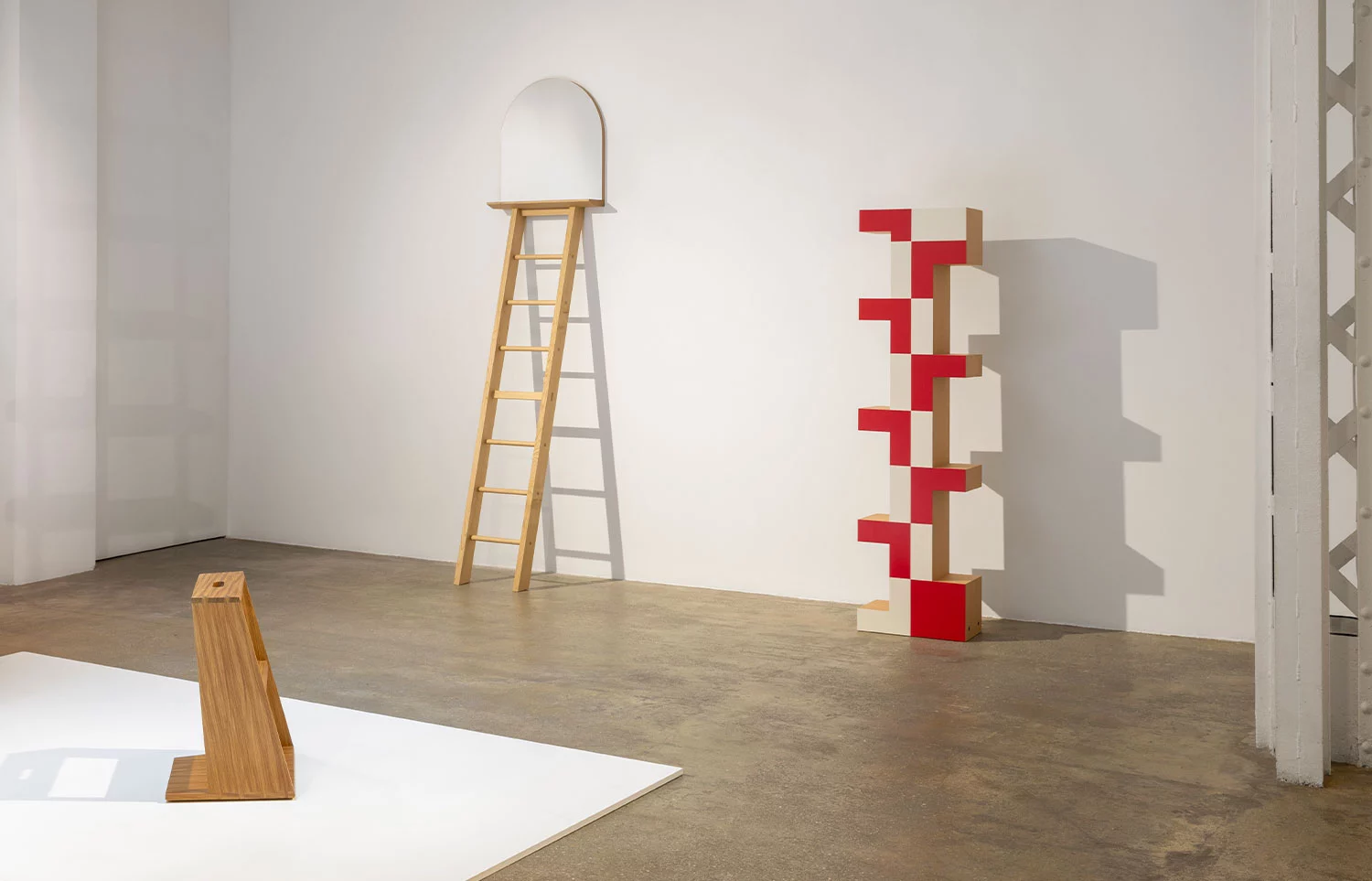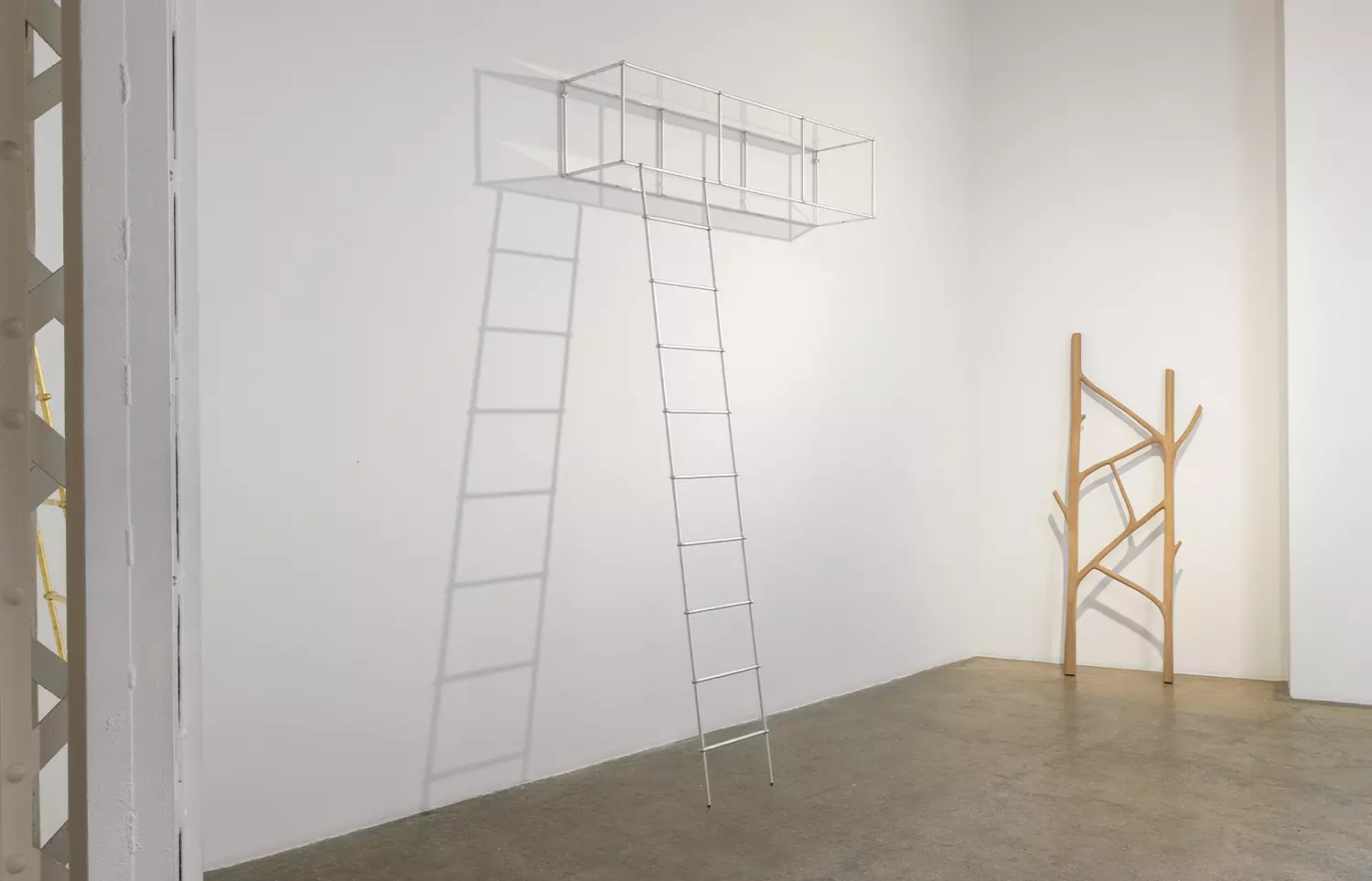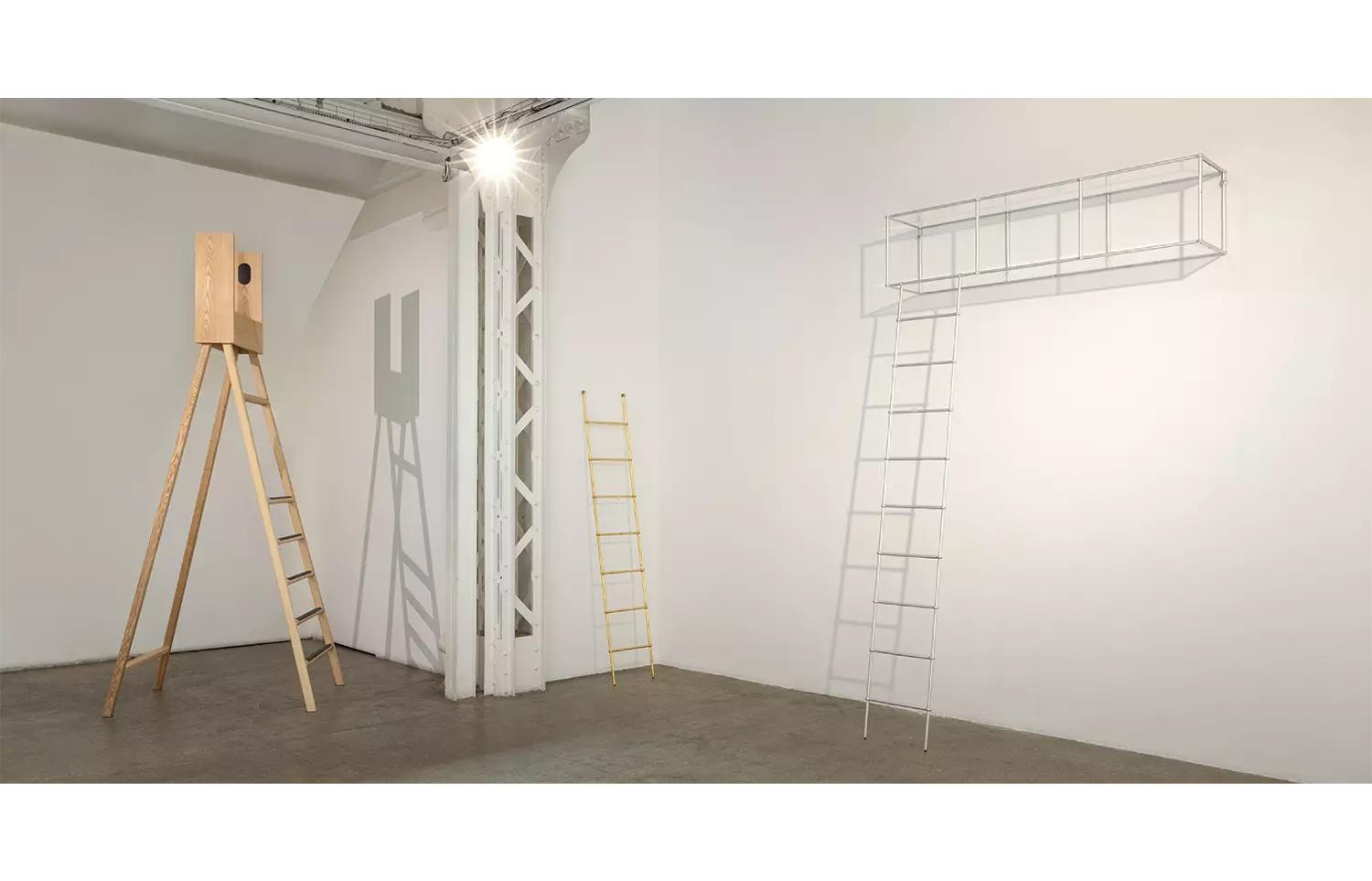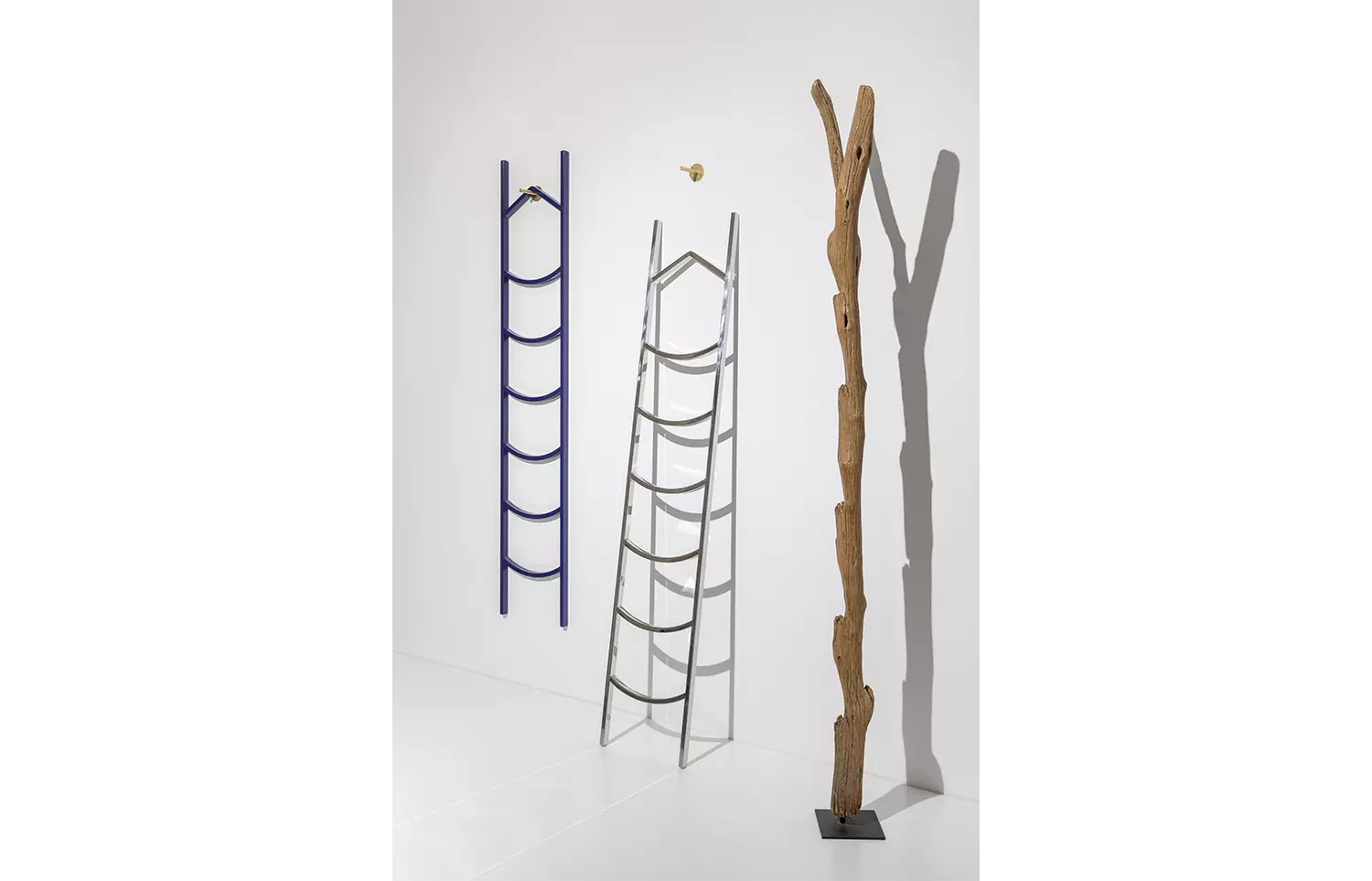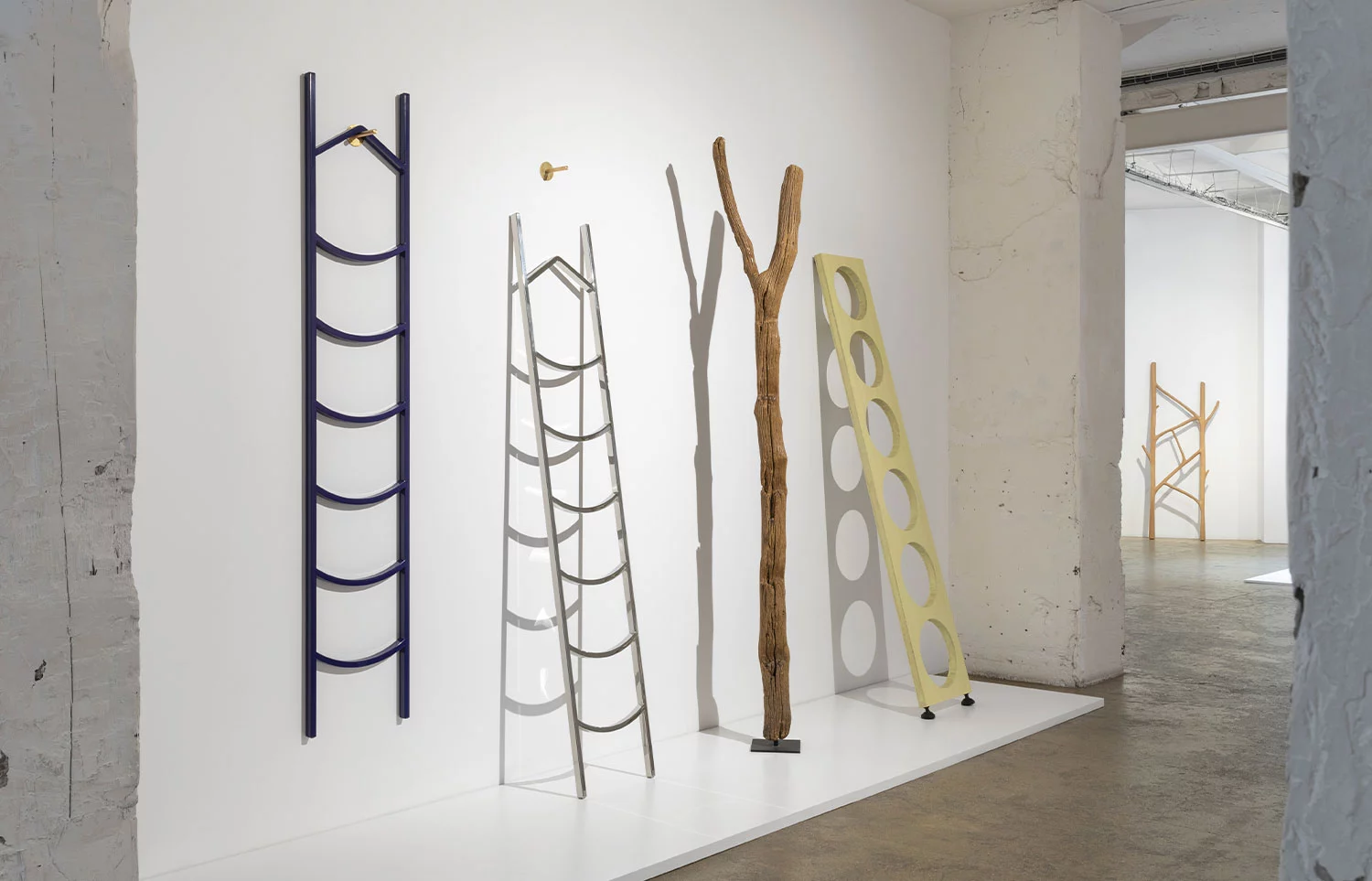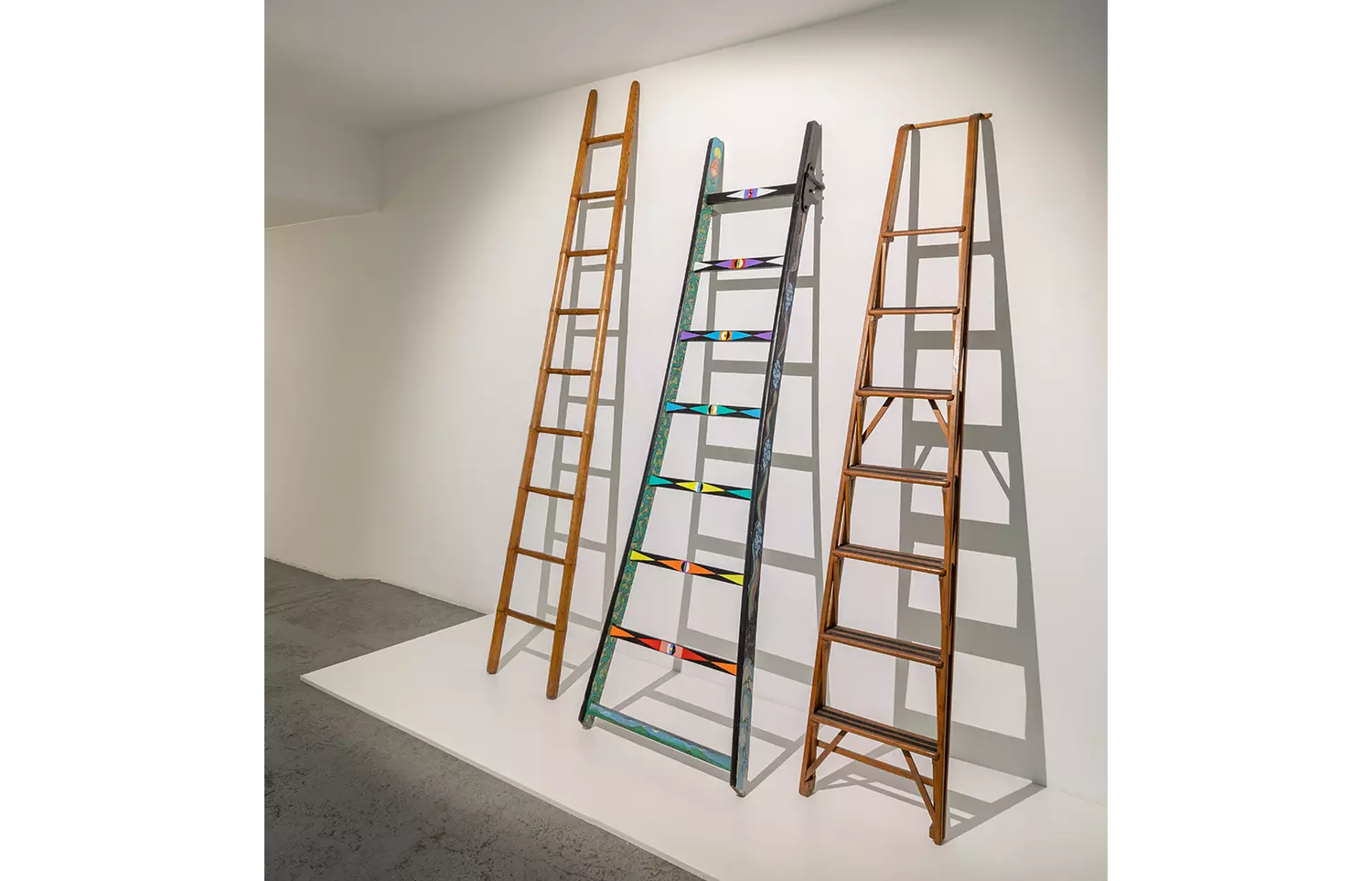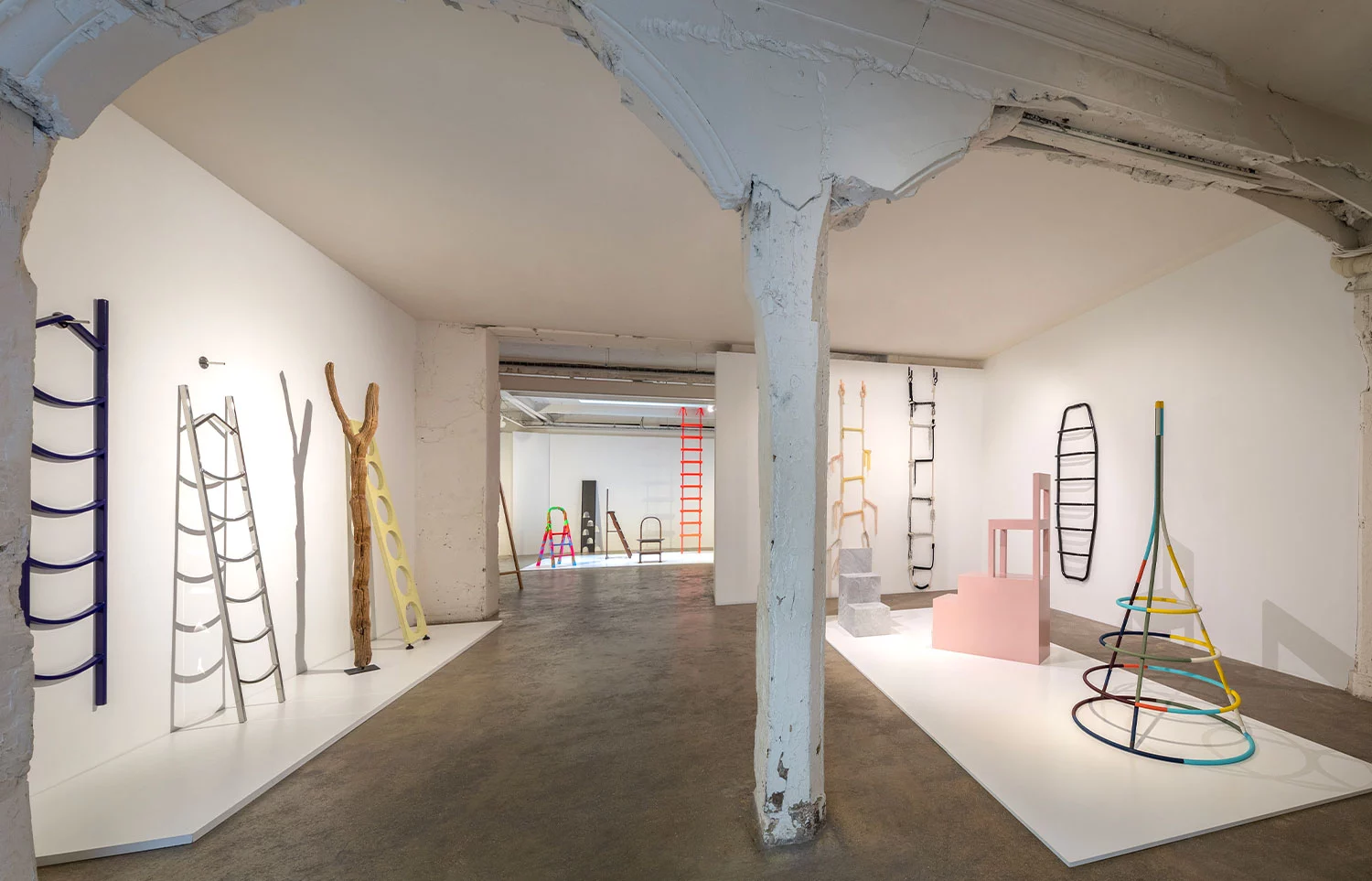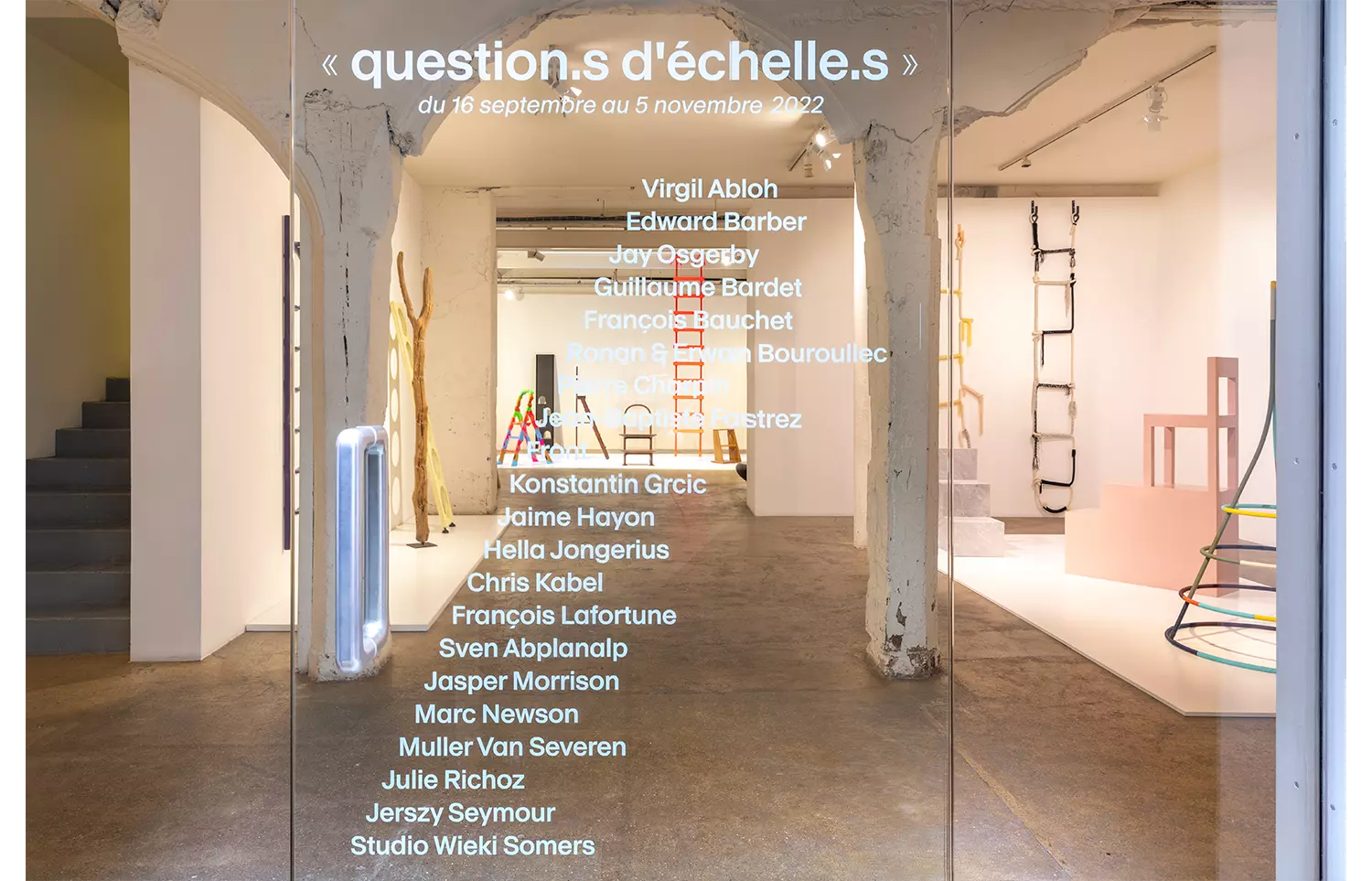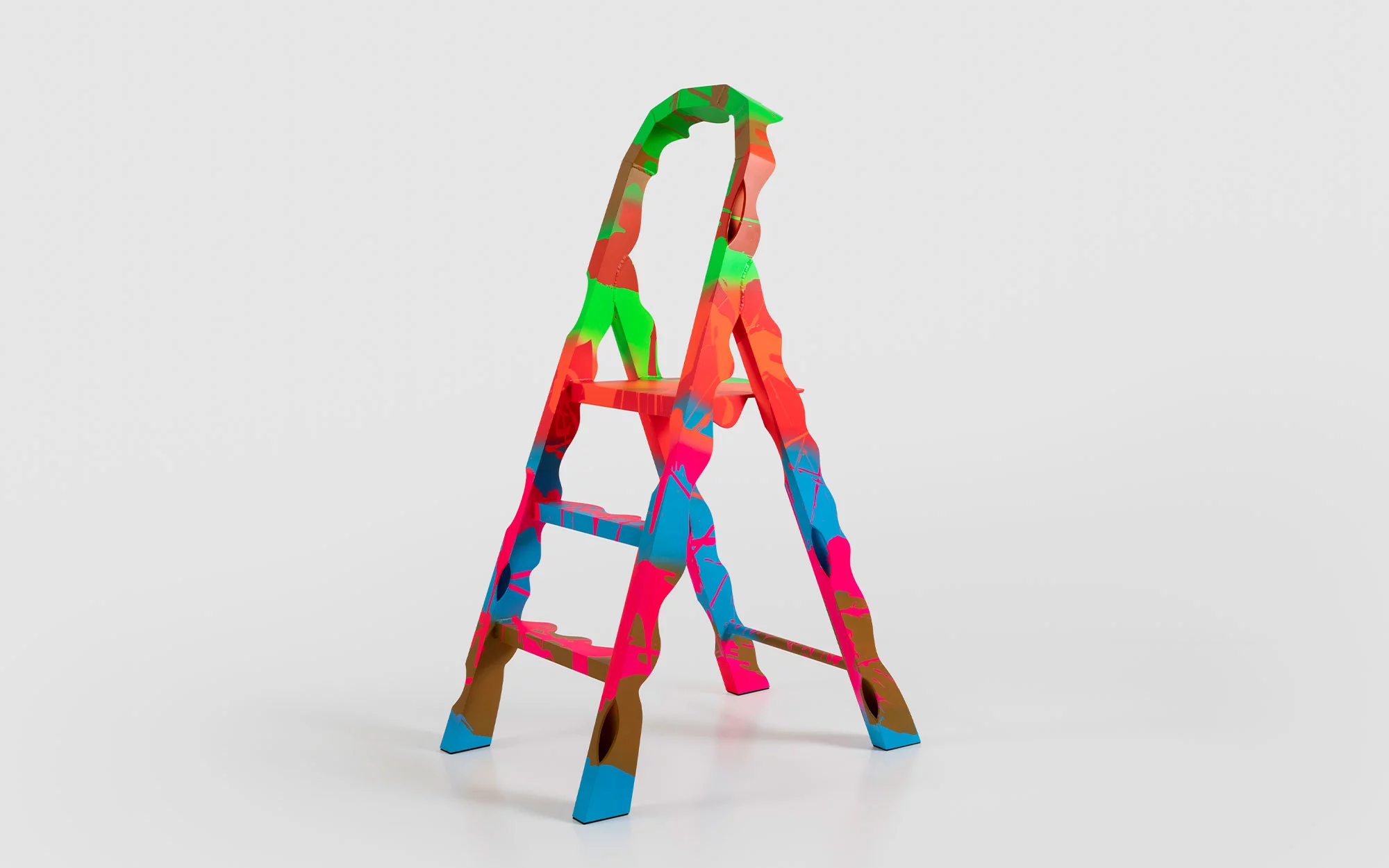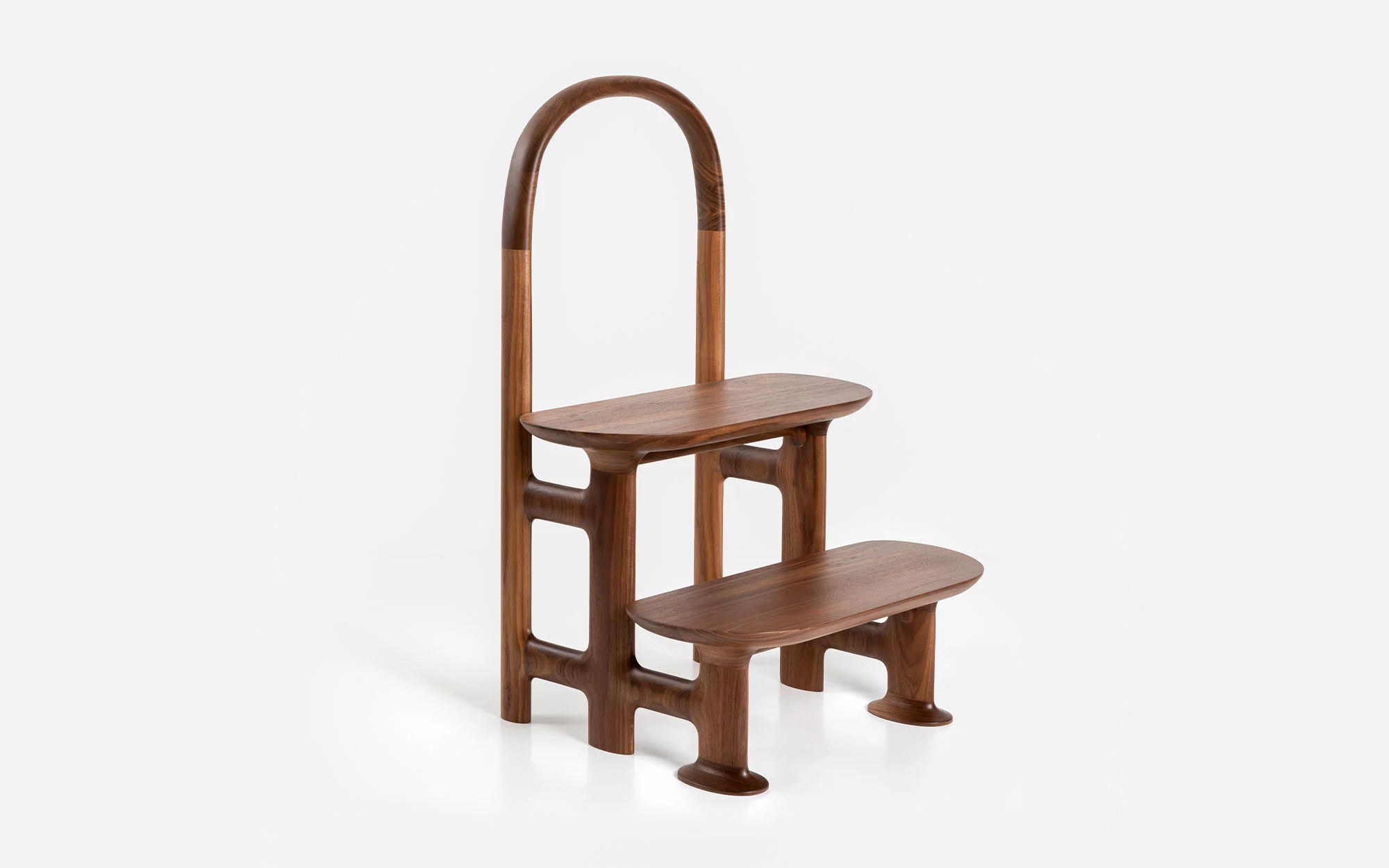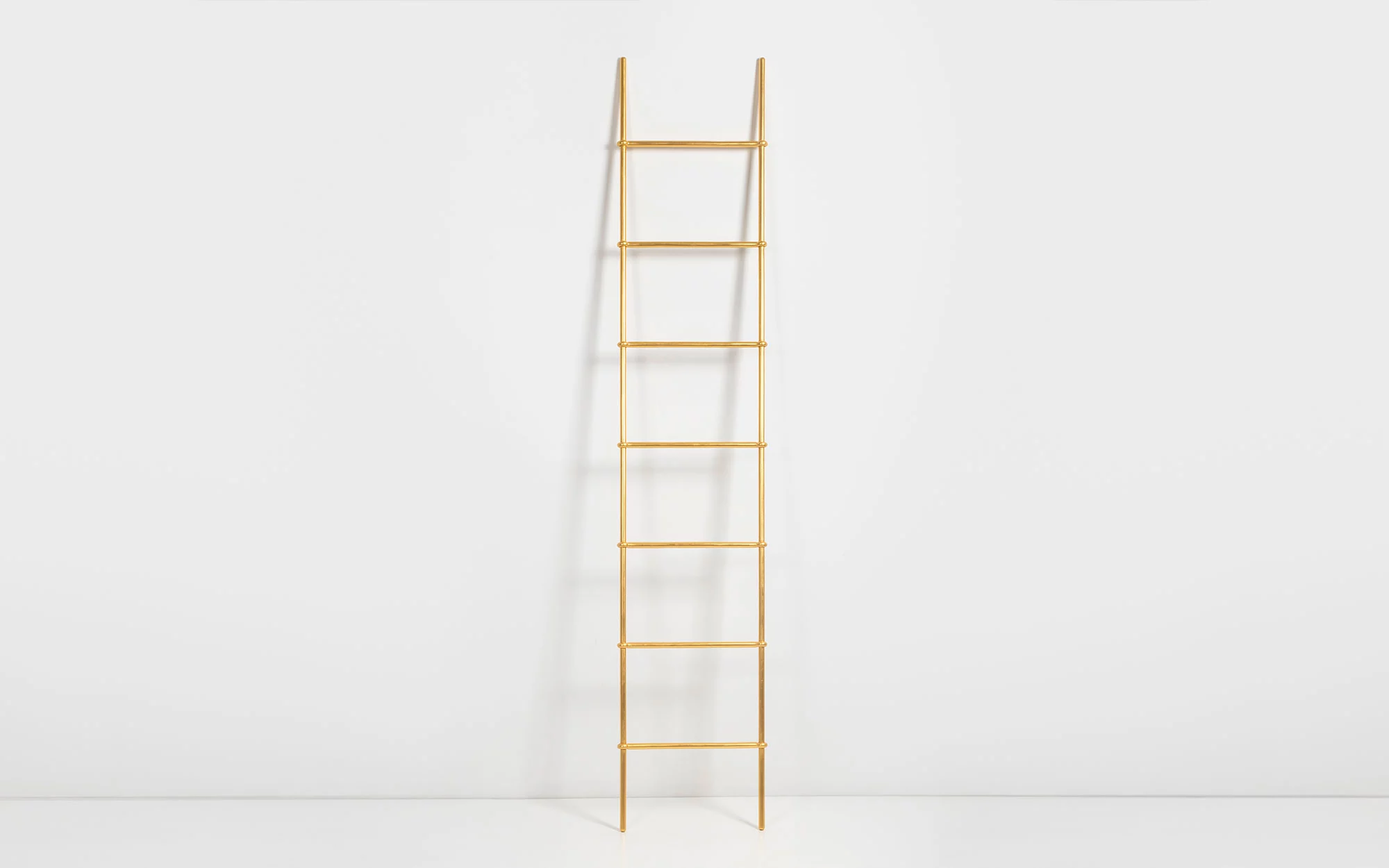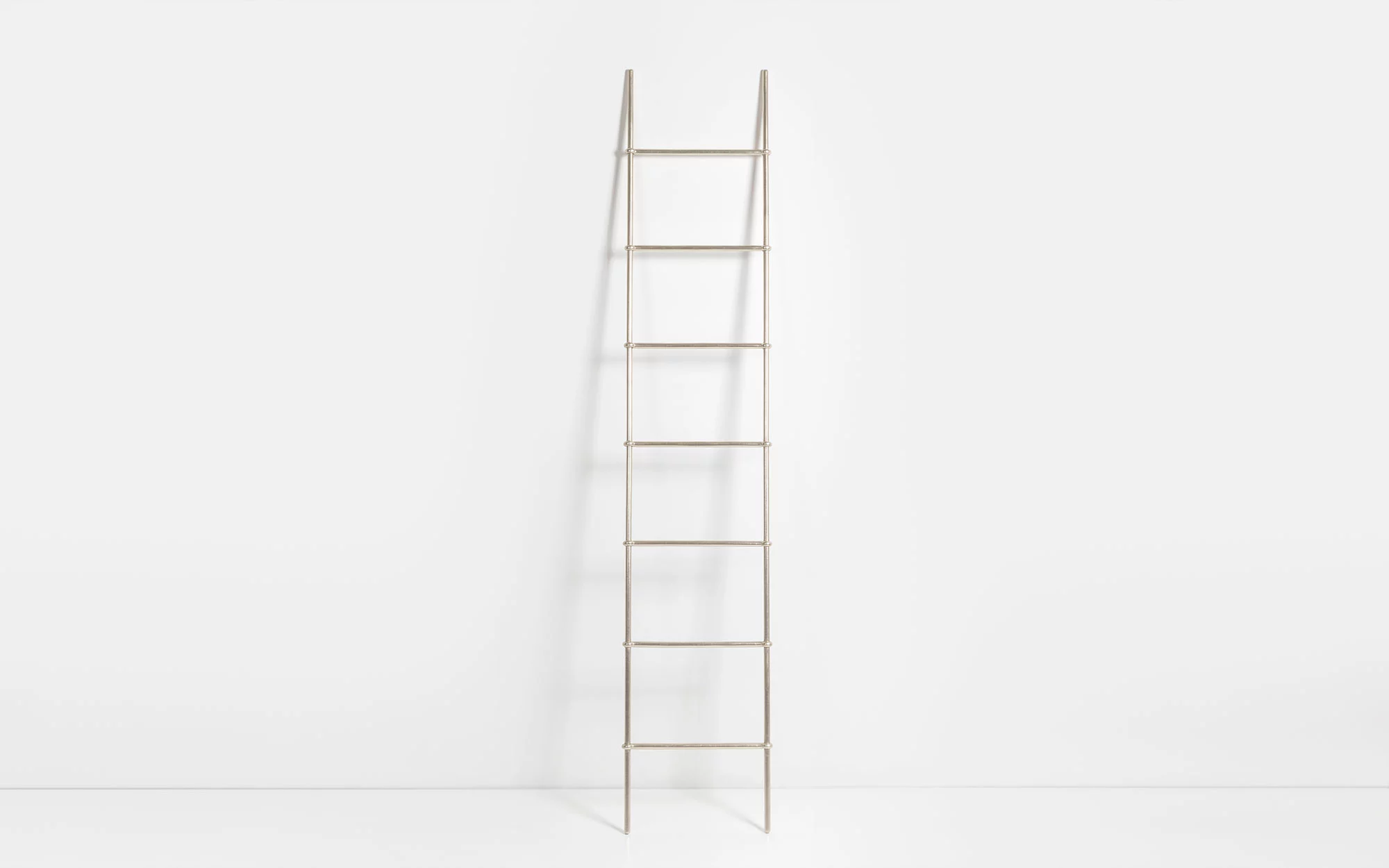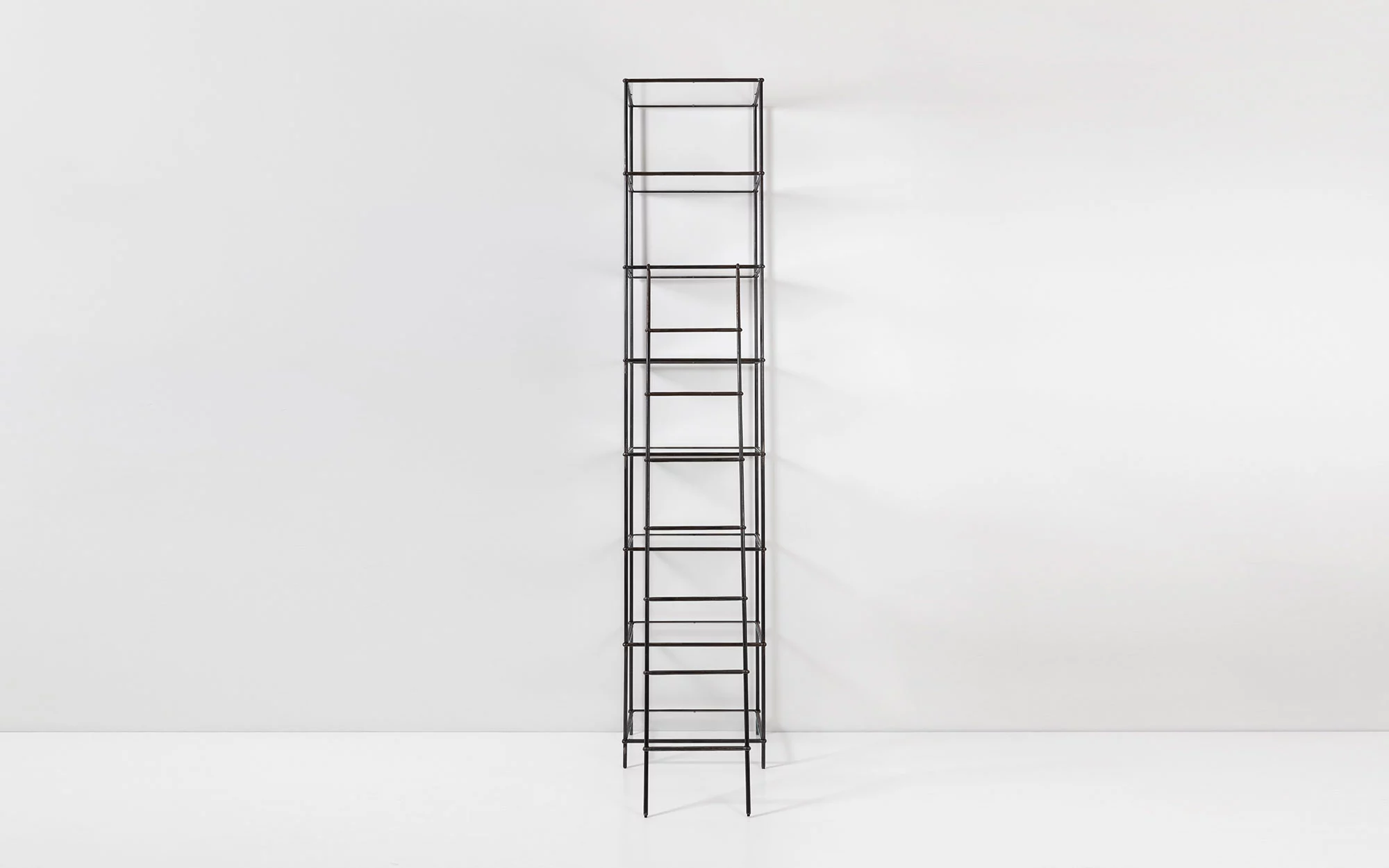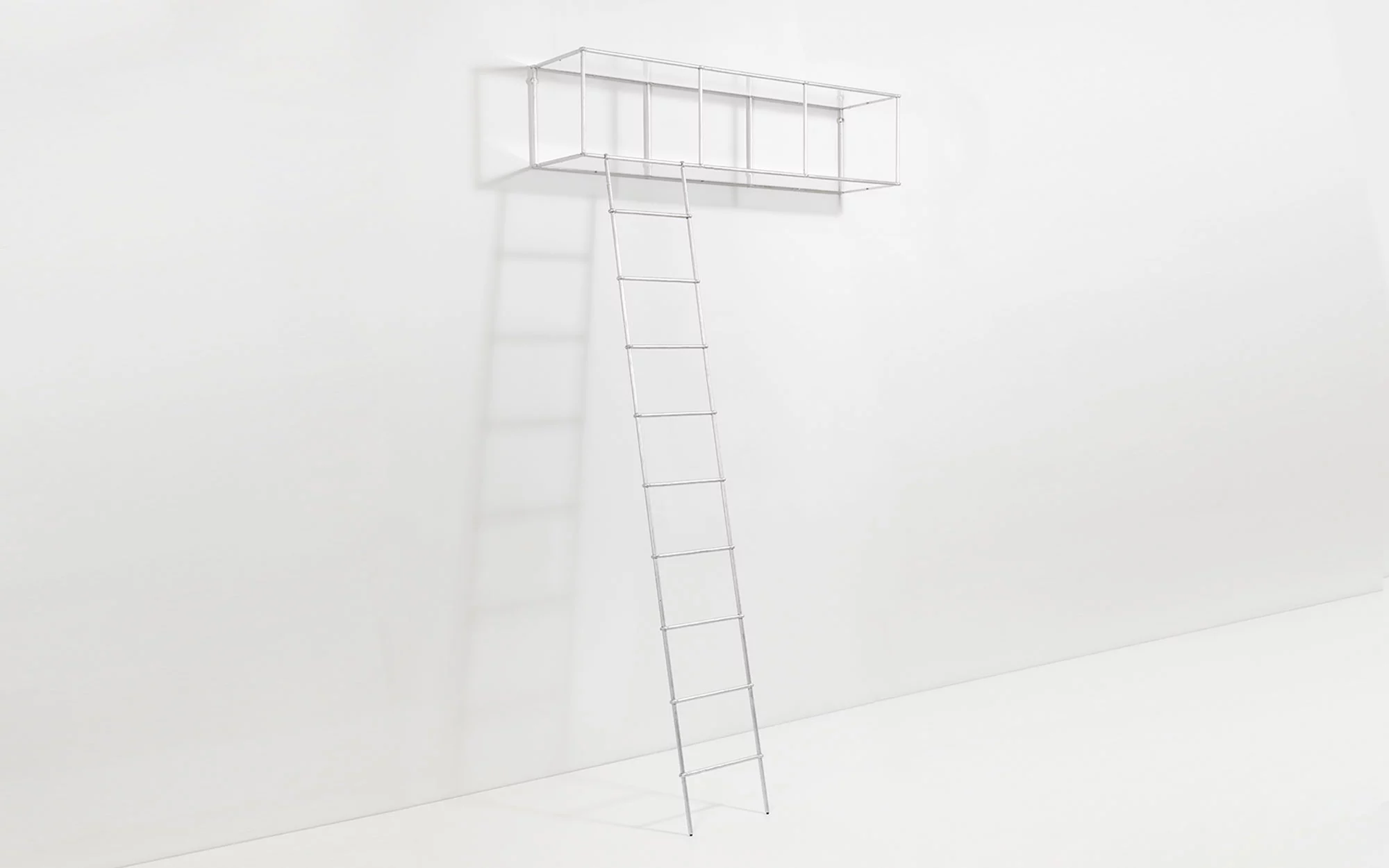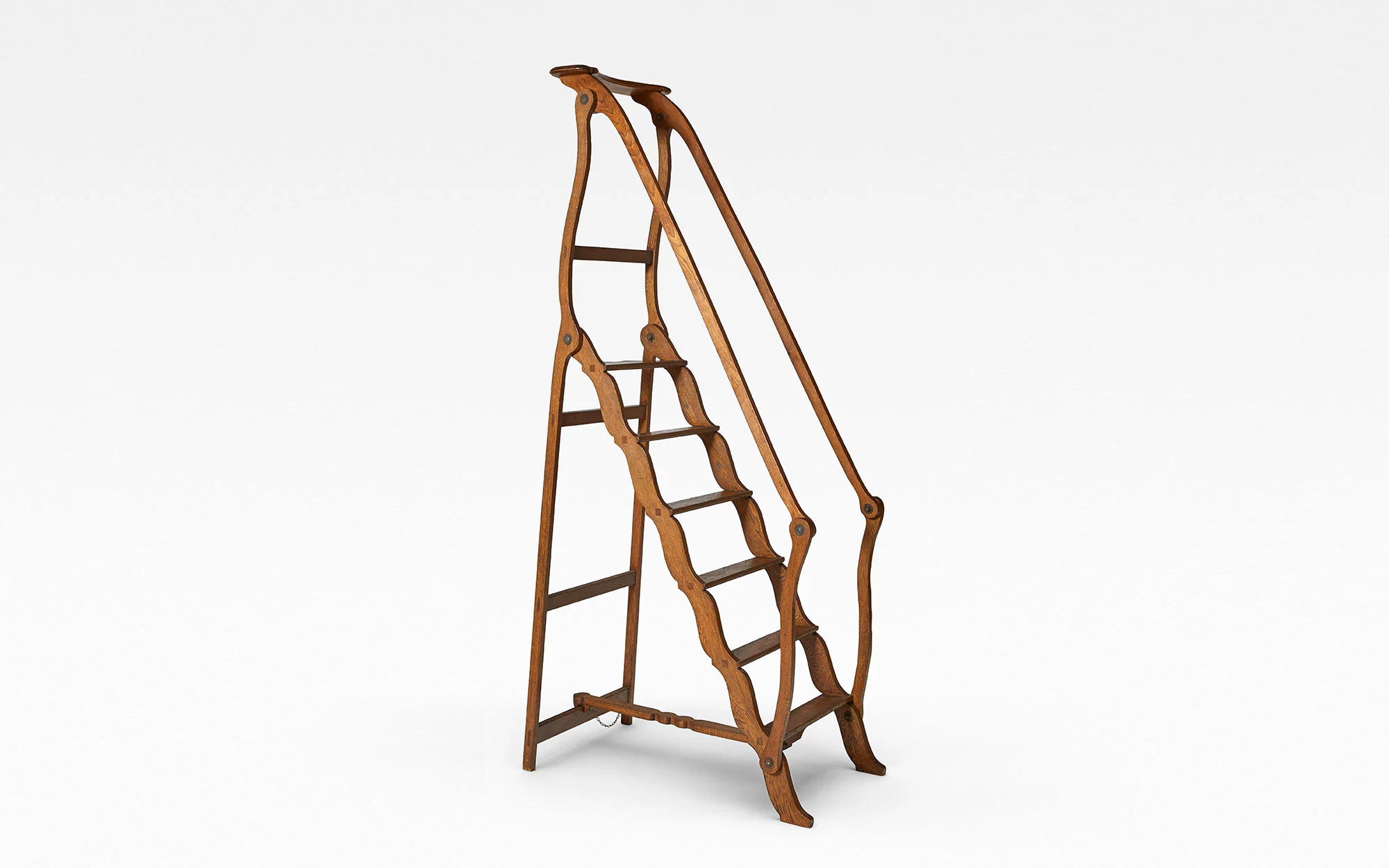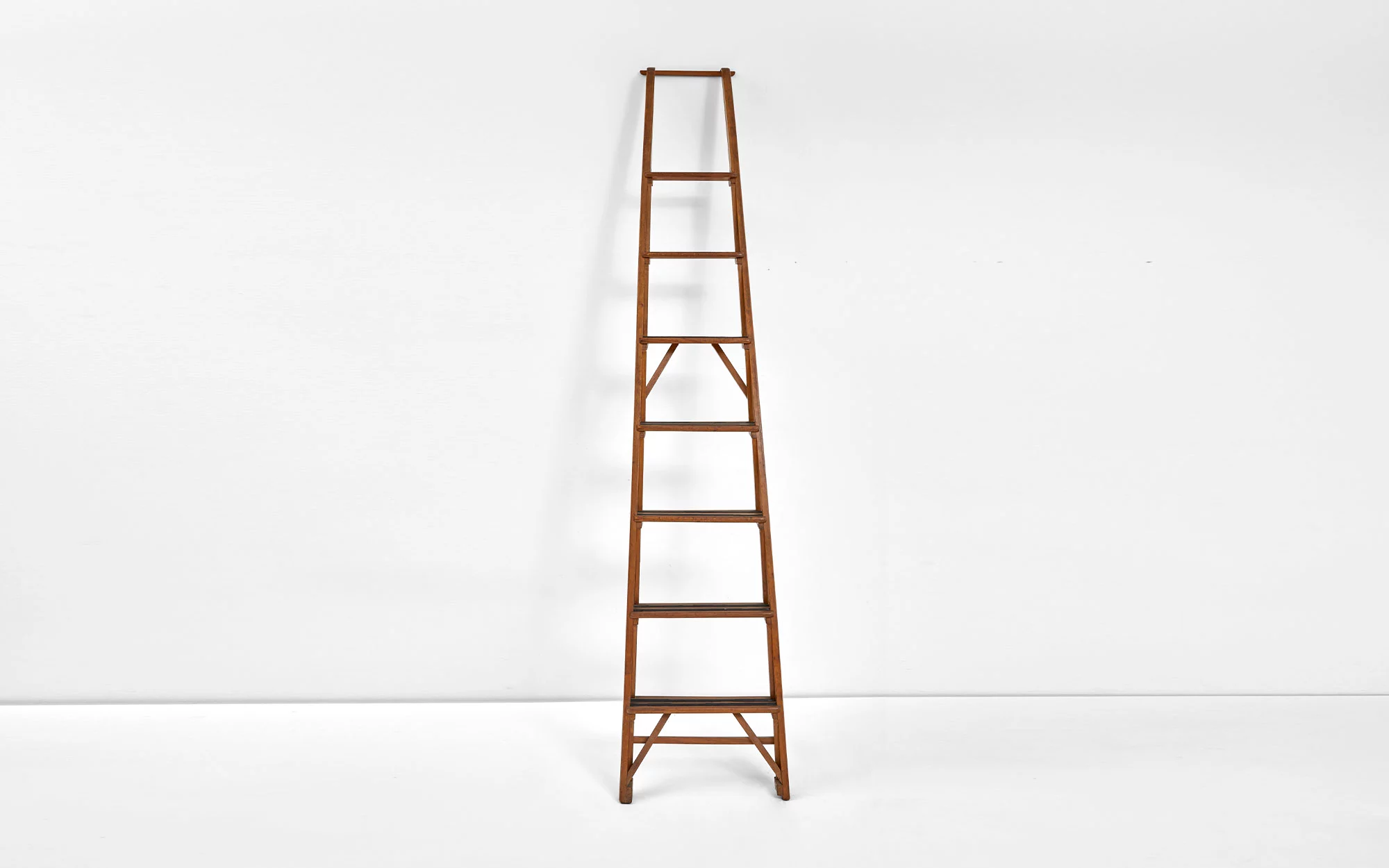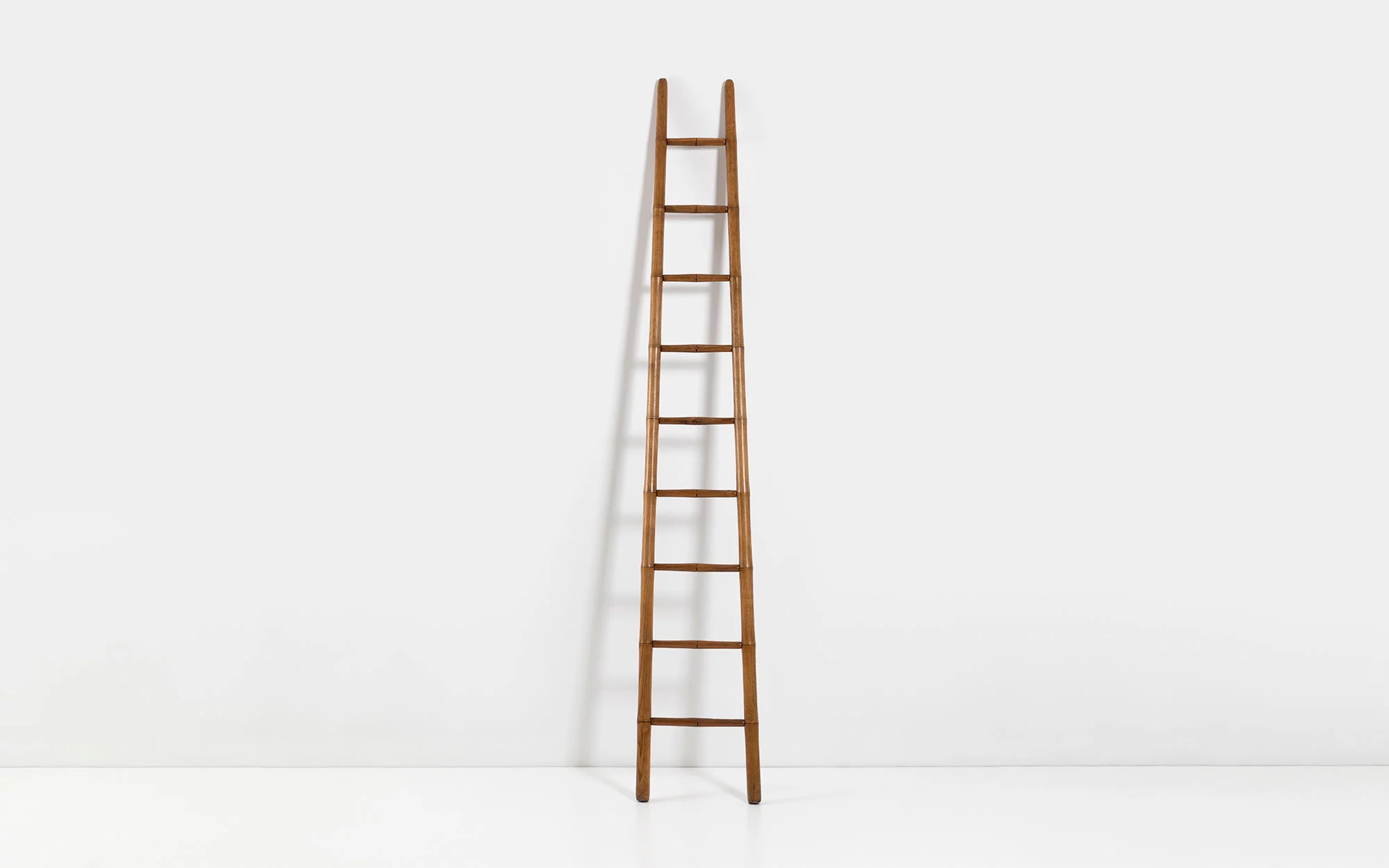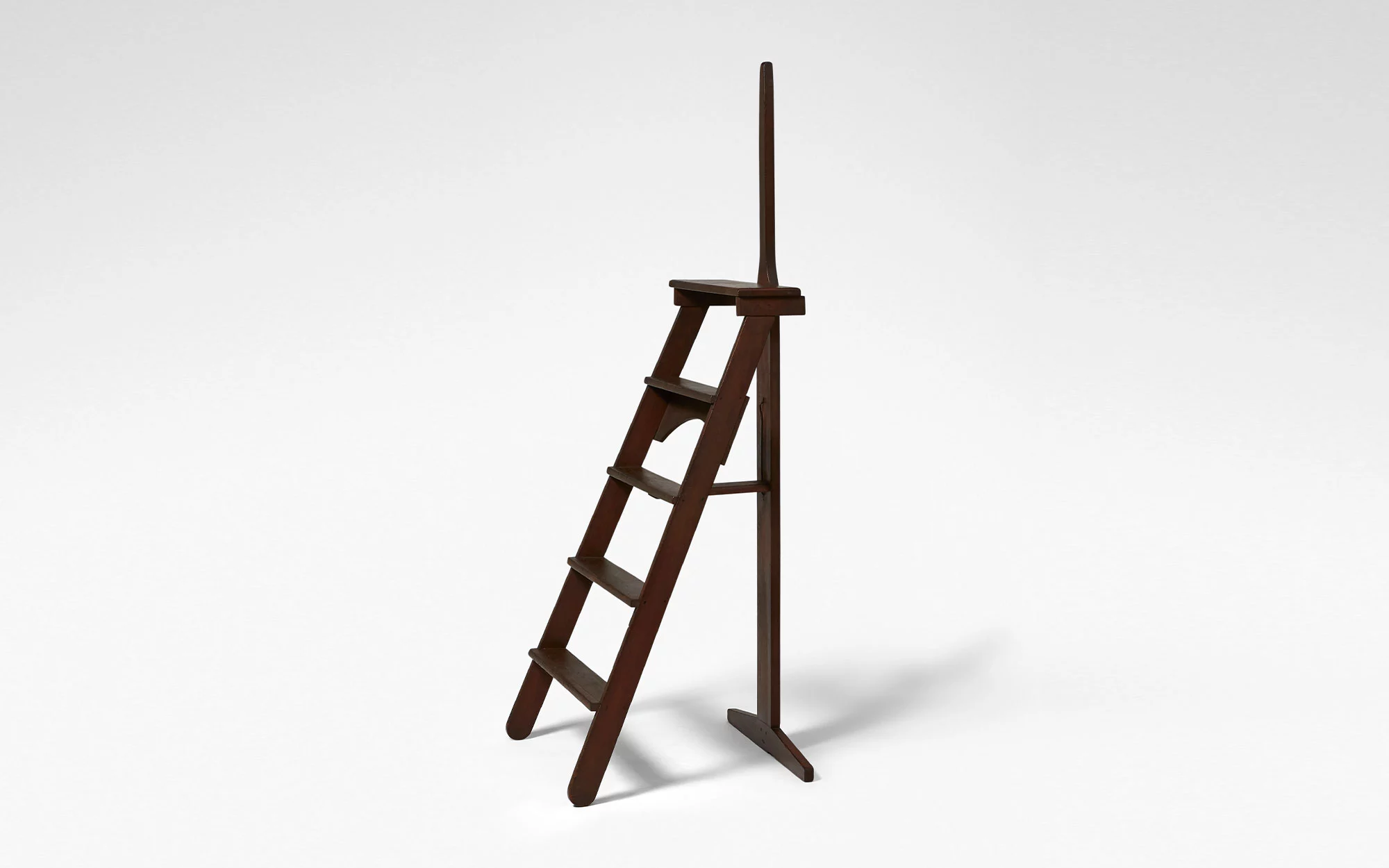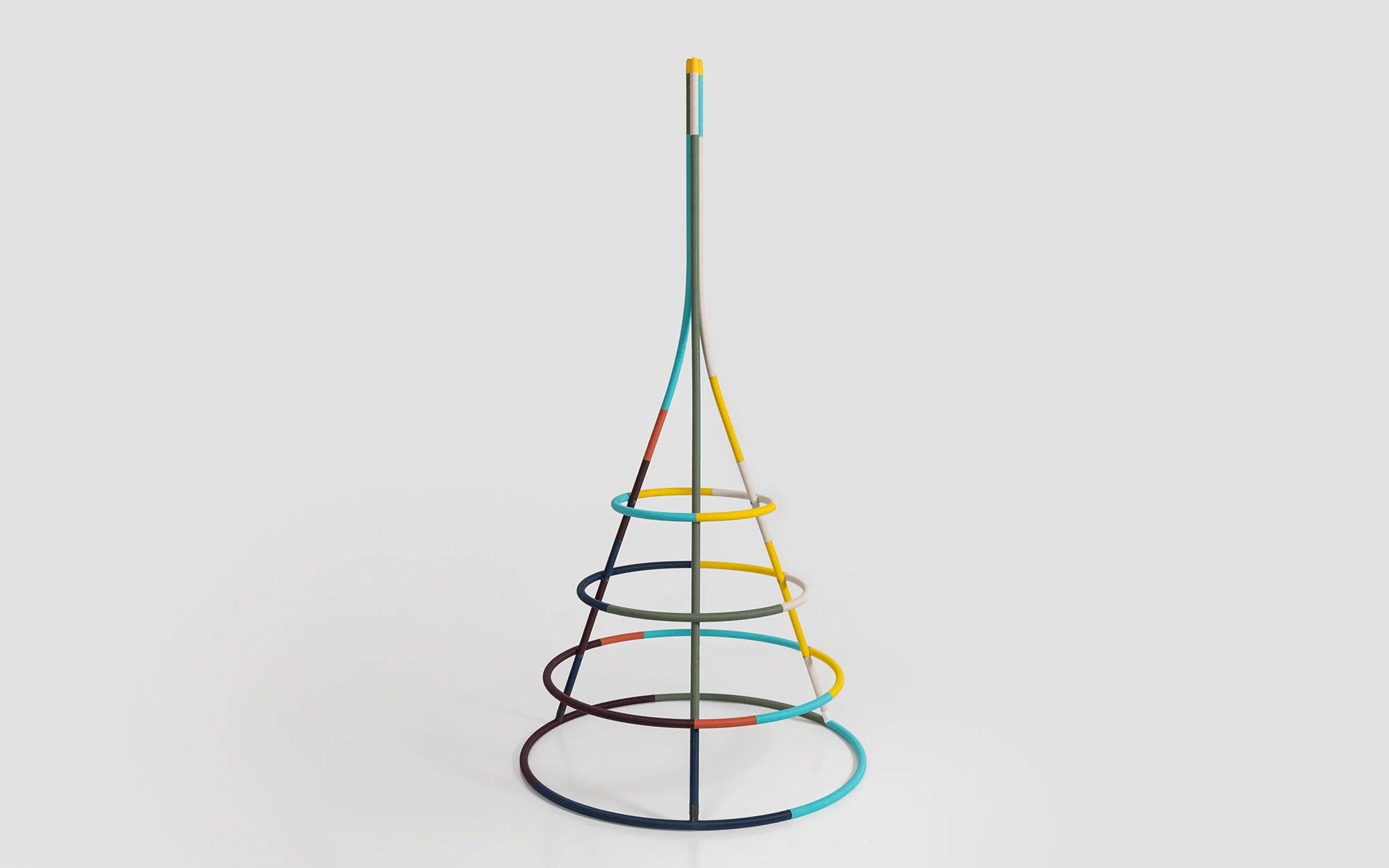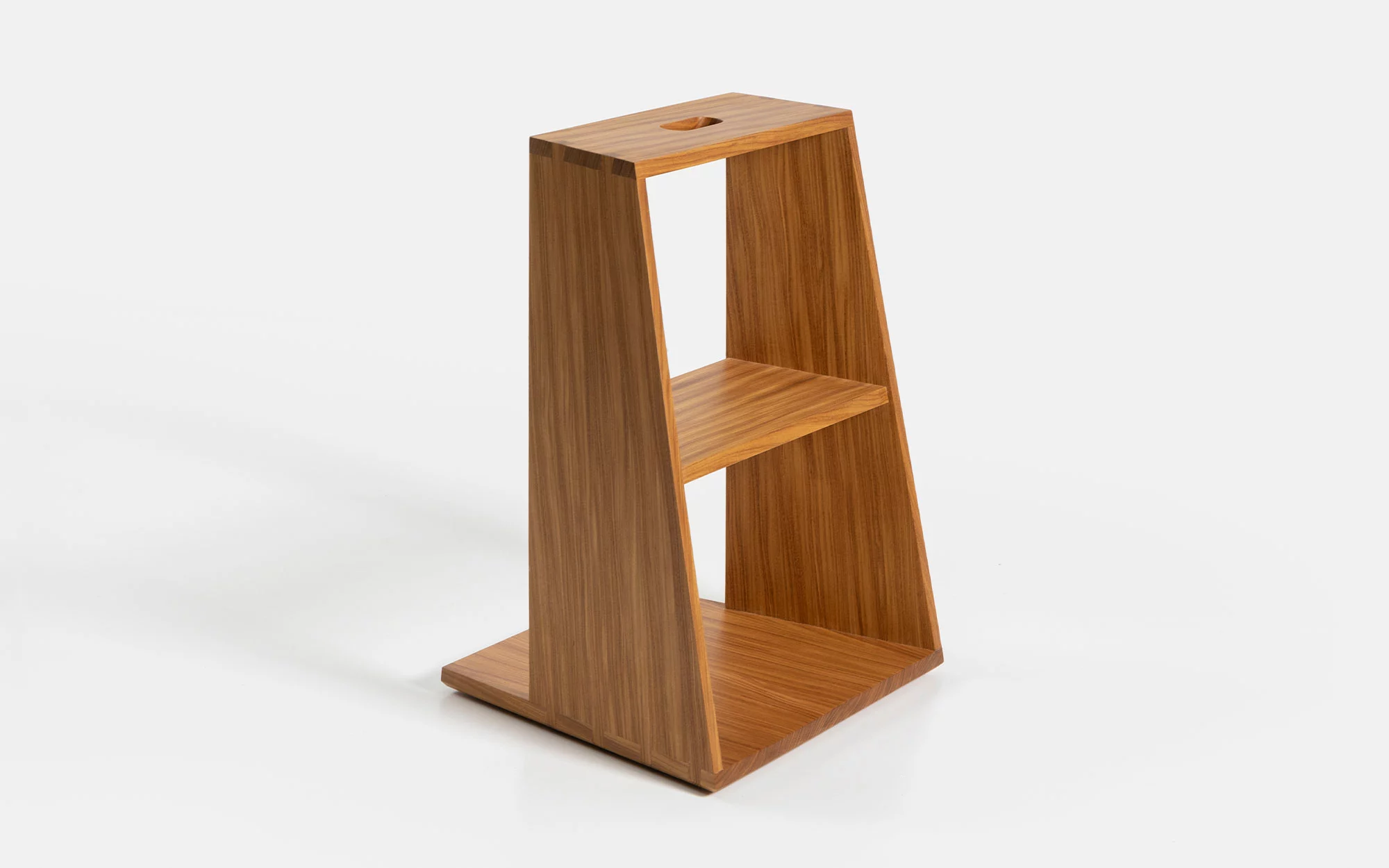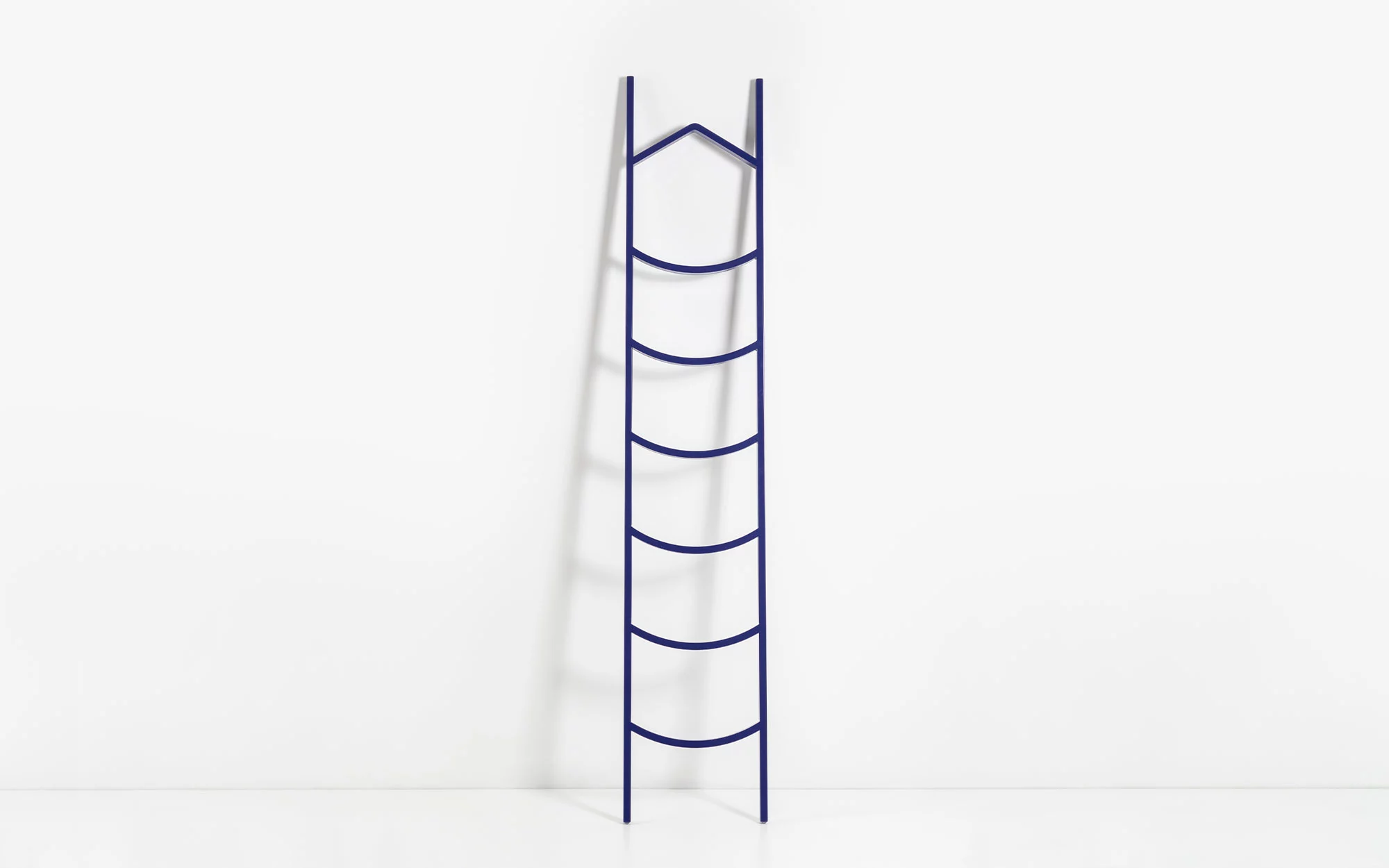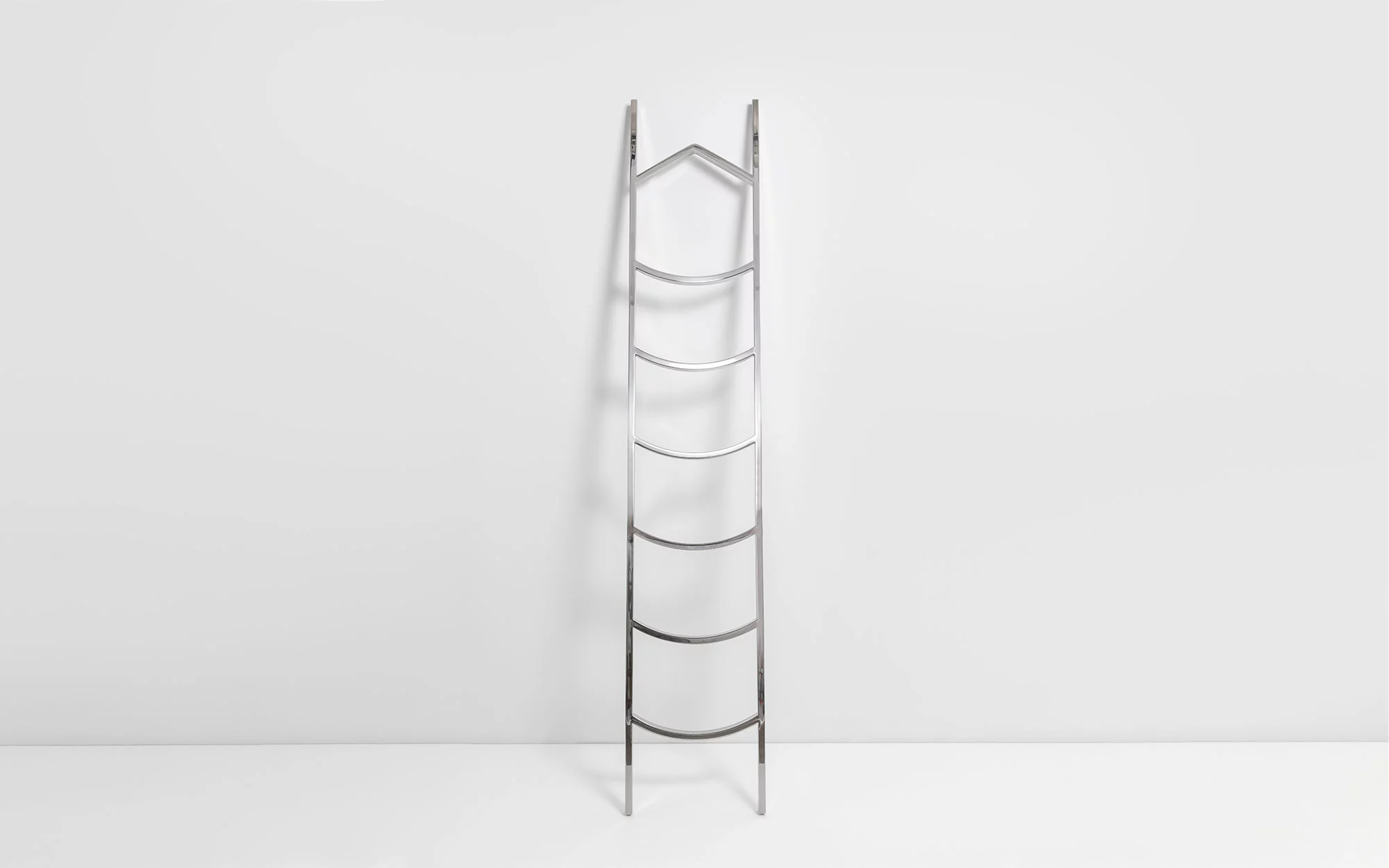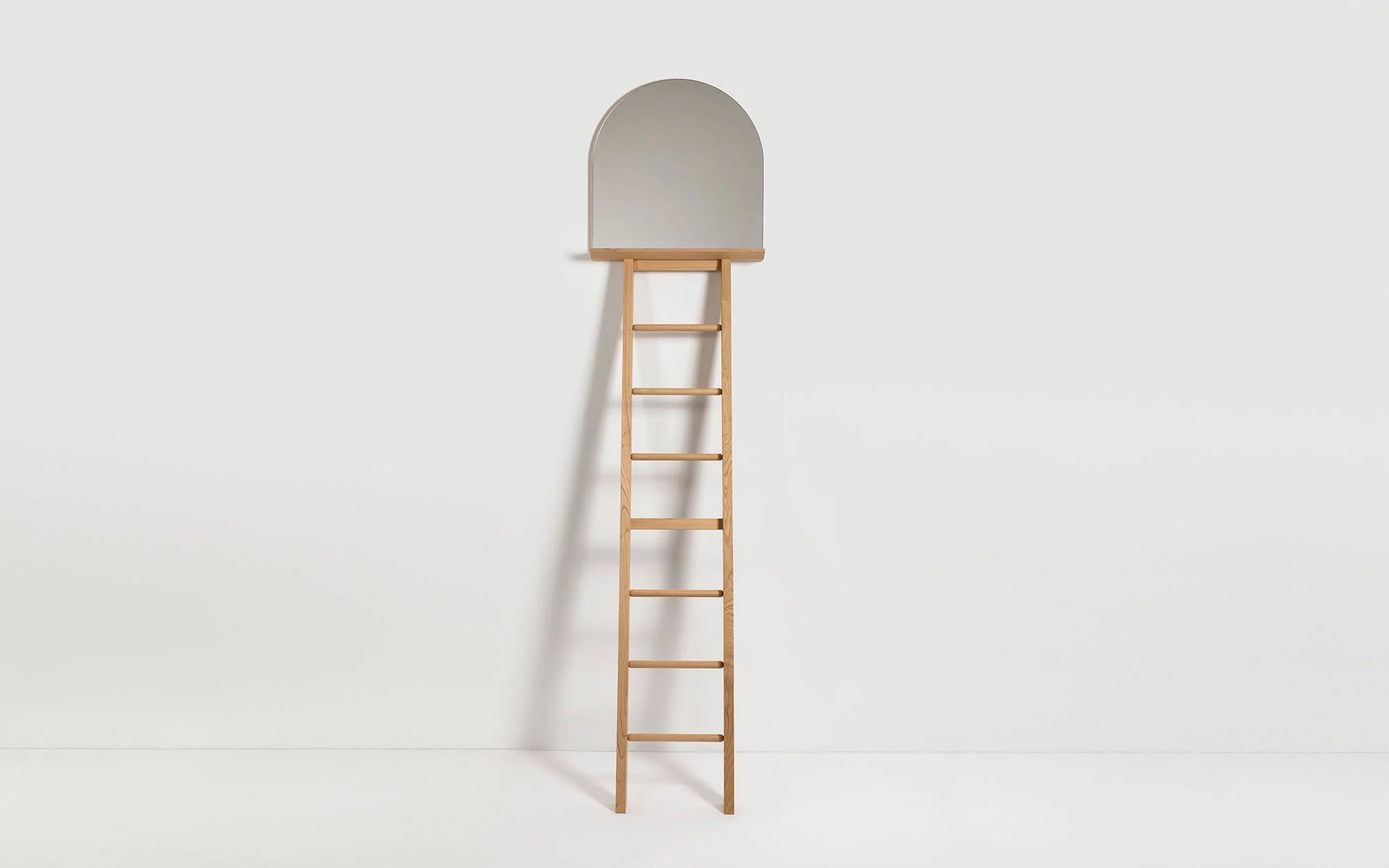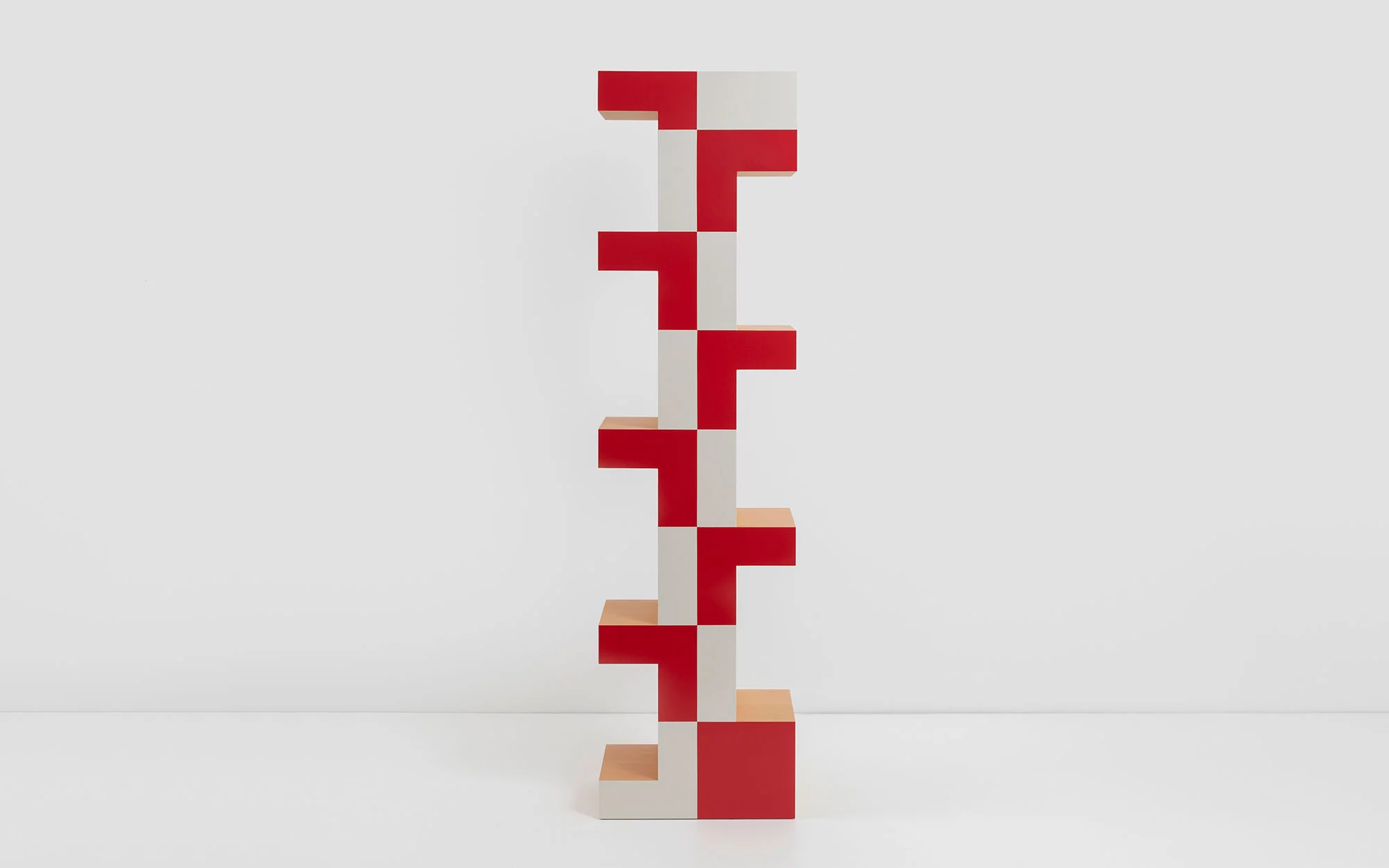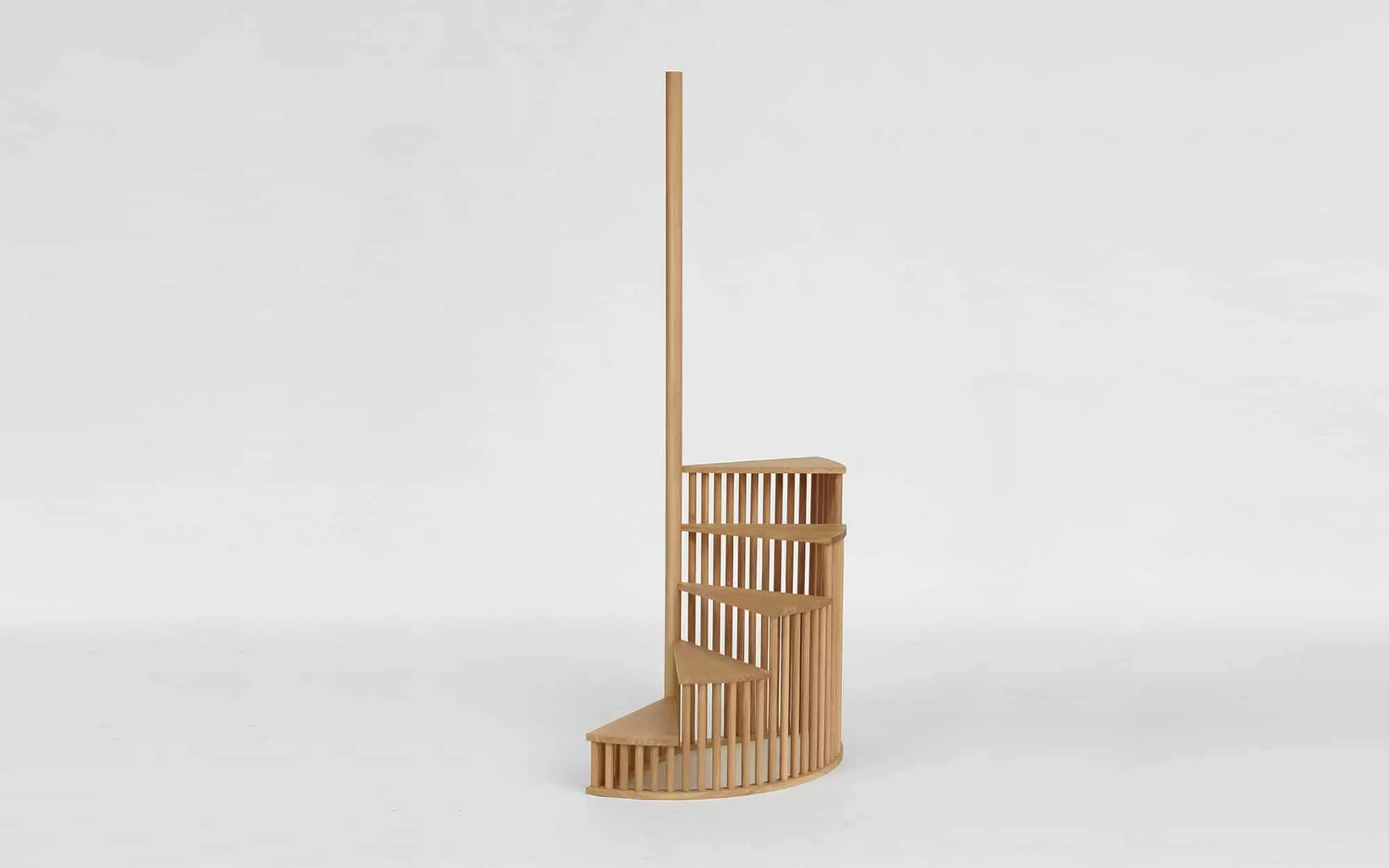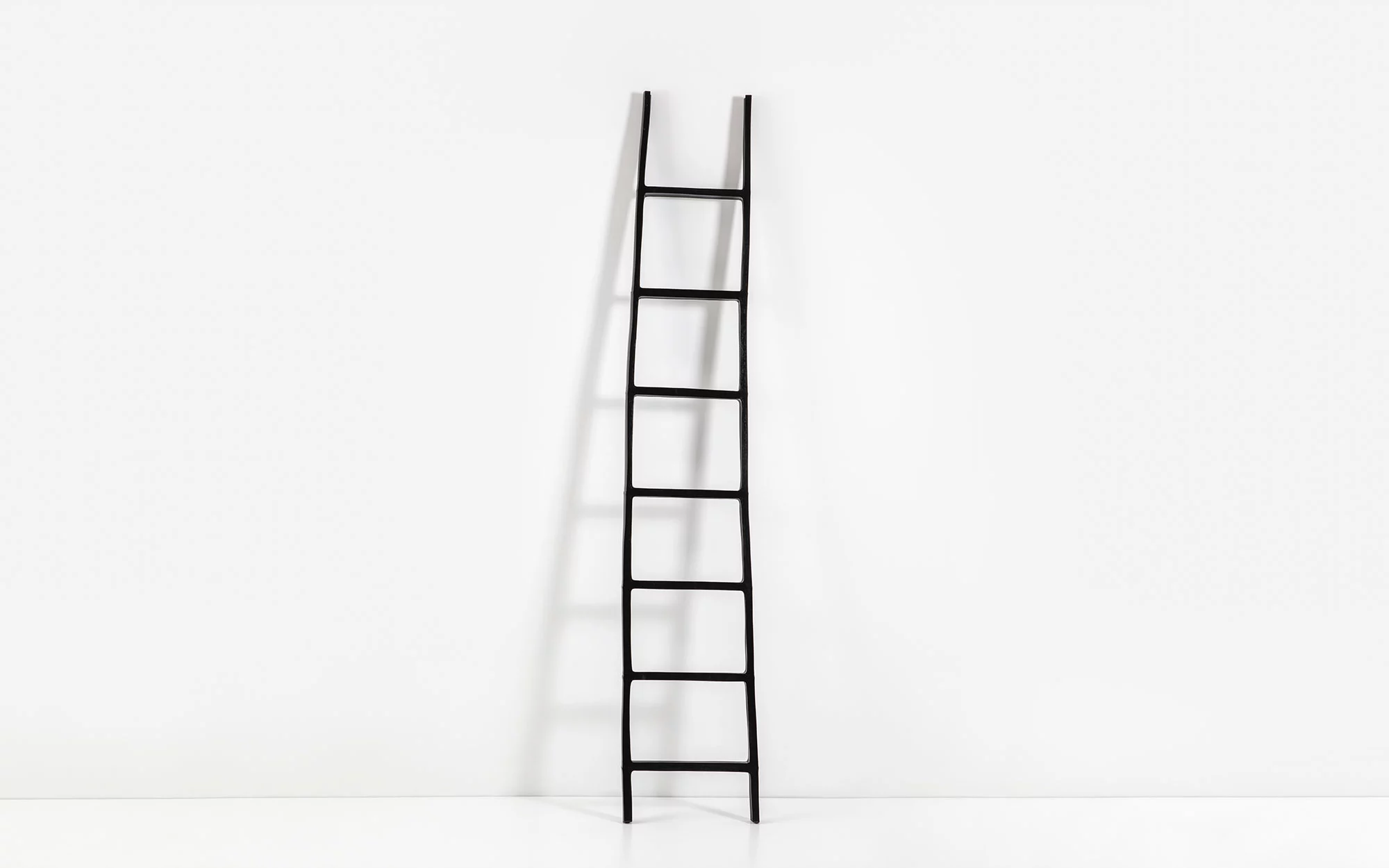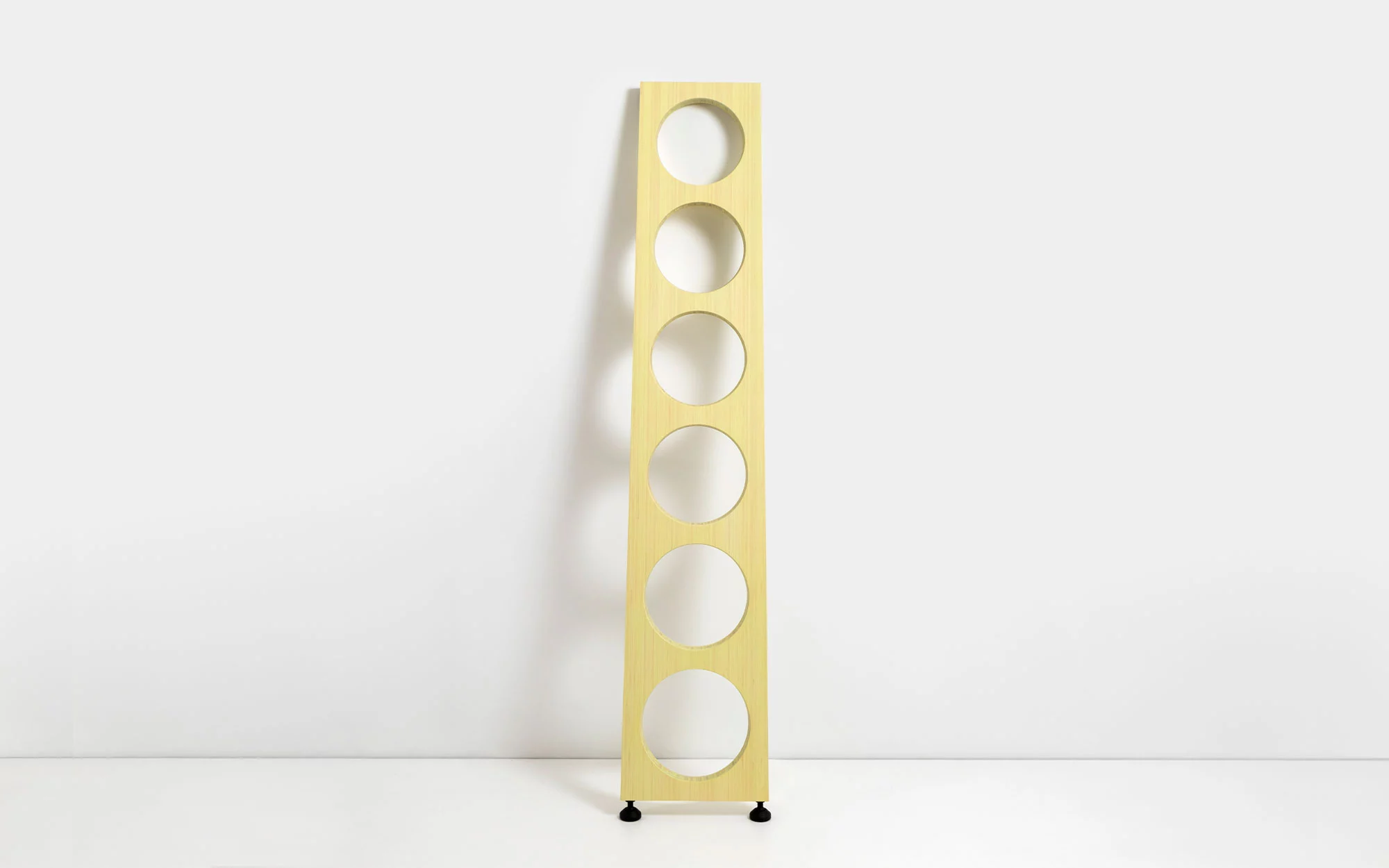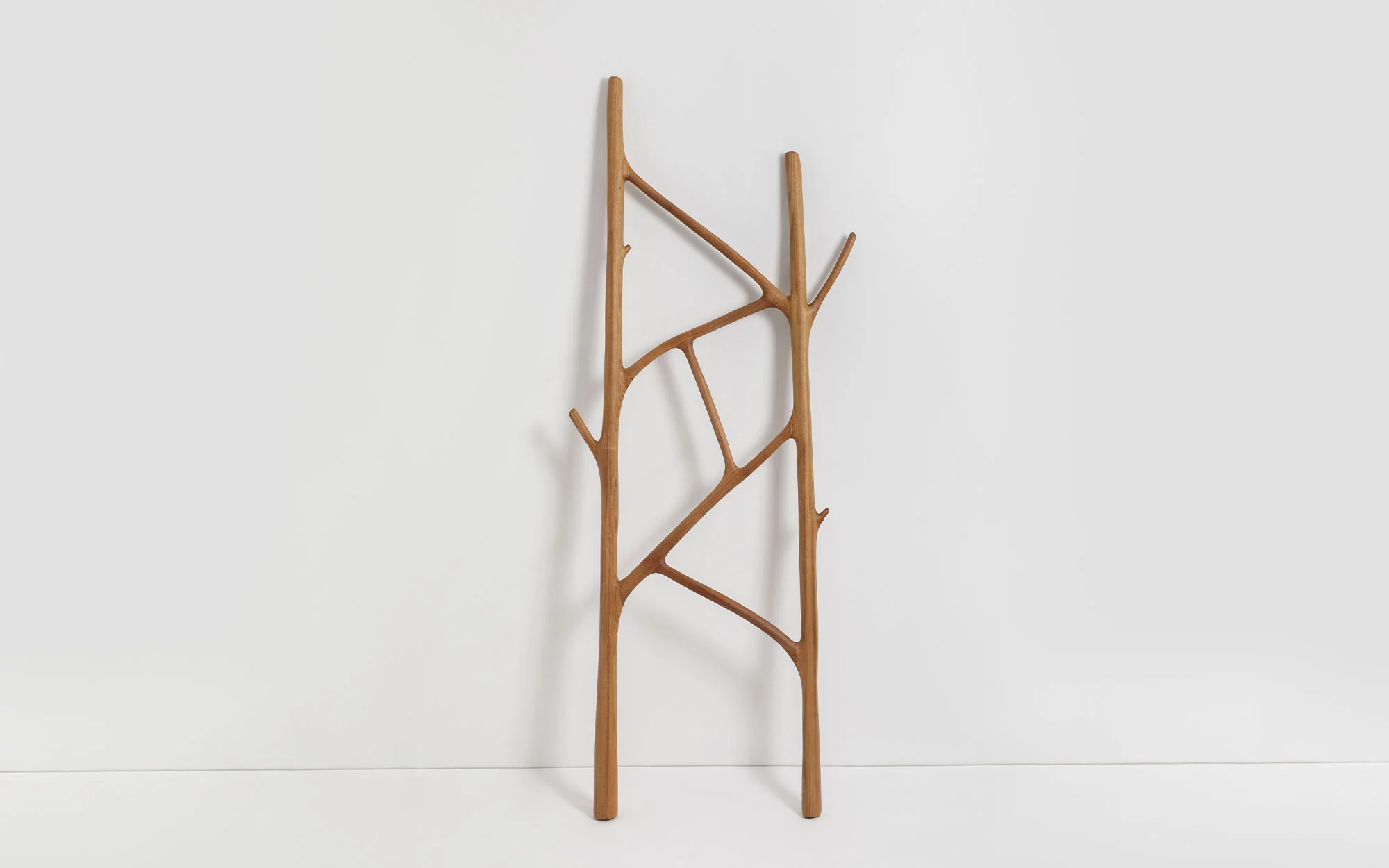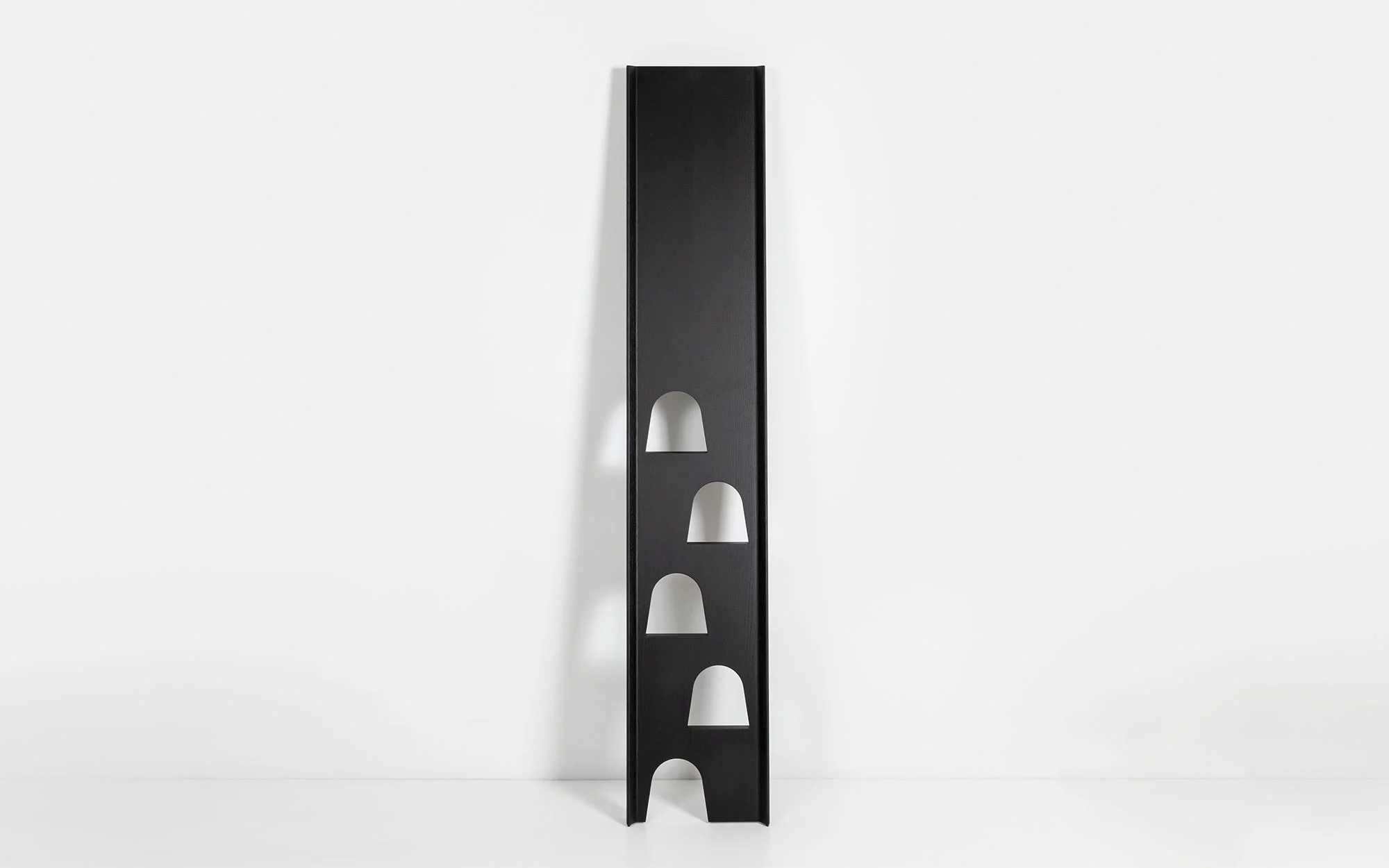Some of them even become stepladders, technical or psychedelic (Jasper Morrison, La Scala, 2022; Jerzsy Seymour, Acid Tracks Ladder, 2022), or archetypal stairs (Konstantin Grcic, Volume W, 2018).
The typological approach is obviously just as crucial: what, in any given ladder, suggests the idea of ladder, what does, in every ladder, suggest the very idea of a ladder? Its strict definition, or, on the contrary, its renewal, its subversion, its hybridization? Some of these aspects simply express the ladder in its pure state, even in its natural state in the case of Front (Tree Ladder, 2022), while others are more playful, such as the Saqqarah ladder-sarcophagus (2022) by Jean- Baptiste Fastrez. By taking on other functions, the ladder becomes a piece of furniture “in itself” and no longer just a “transitional object”. This is the case with Pierre Charpin’s Lassù and its mirror at the top, with Ronan and Erwan Bouroullec’s Ciels ladder-shelves, or with Virgil Abloh’s ”WORLD LEADERS” manifesto ladder, 350 cm high (all 2022). By showcasing the names of iconic black figures in the history of the civil rights struggle or in popular culture. As for the proposals of Edward Barber and Jay Osgerby (Yo Yo, 2022), François Bauchet (Level, 2022), Chris Kabel (Nodes, 2022), Muller Van Severen (Ladder, 2022), and Julie Richoz (O’Step, 2022), they renew the notions of interval and reach, showcasing non-standard steps, deconstructing traditional structure, playing with perception and proportions.
By commissioning more than 20 designers to rethink the form, the materials, the use and implications of the ladder, Galerie kreo offers not a second life to this simple and useful everyday object, but rather a visible existence. Just think about where most ladders are stored to understand that they are some of the least-cared-about objects of contemporary design. The ladders gathered in step by step (question.s d’échelle.s) will be visible, waiting to be climbed and descended.
